EXTREMELY RARE! WWII 1944-1945 "M8 Mine" Destructor Mechanism “Ordinance Department U.S.A.” Anti-Tank & Booby Trap Blueprint
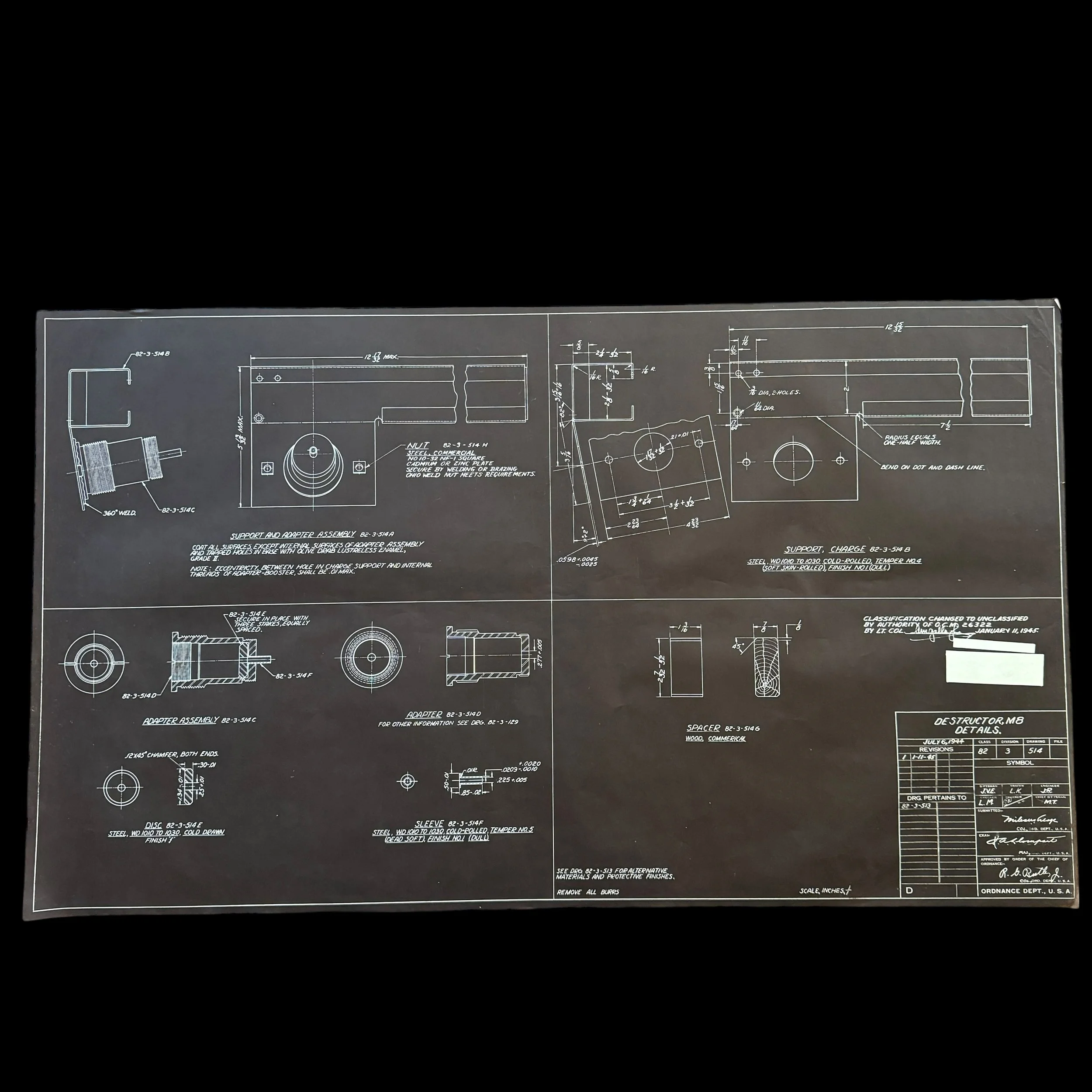
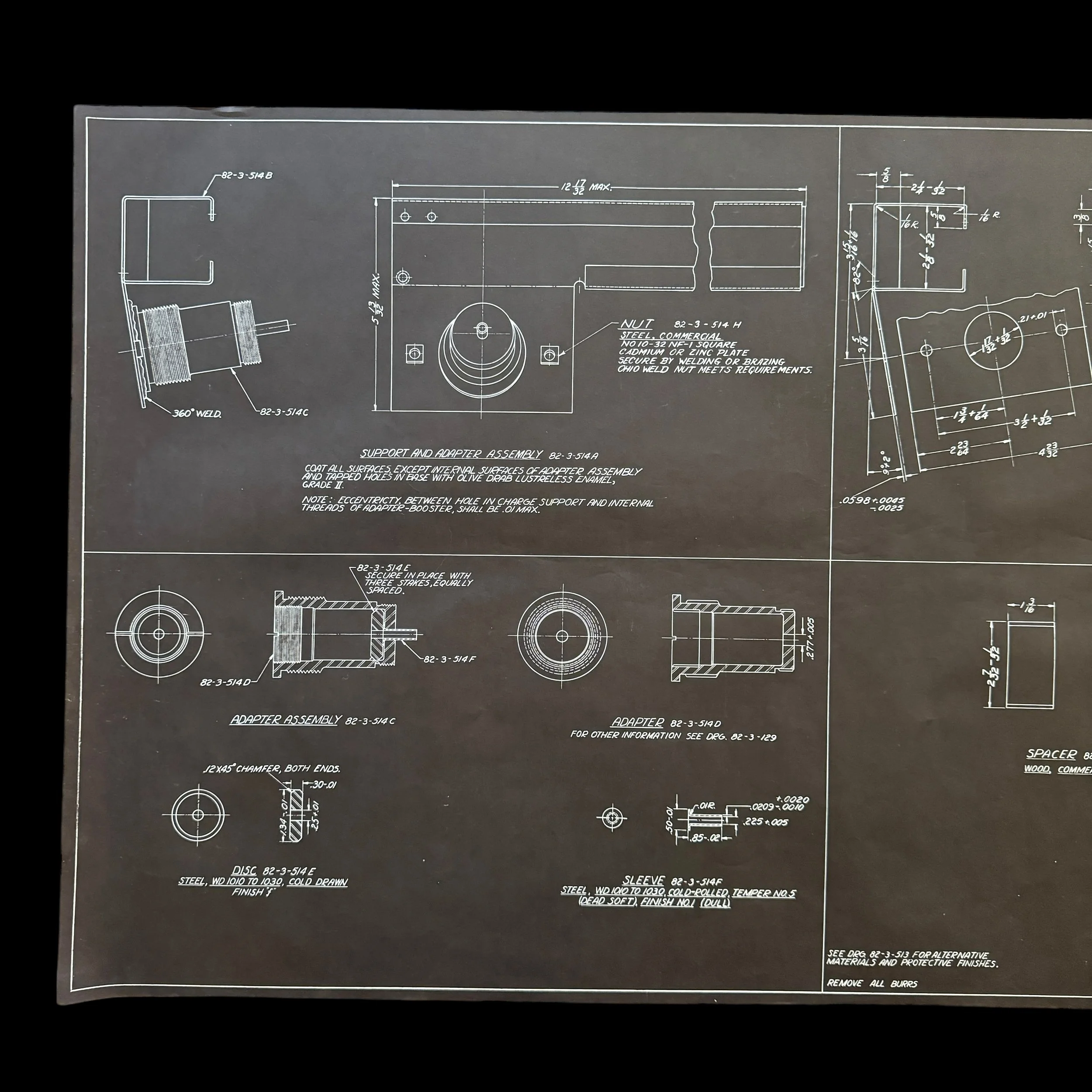
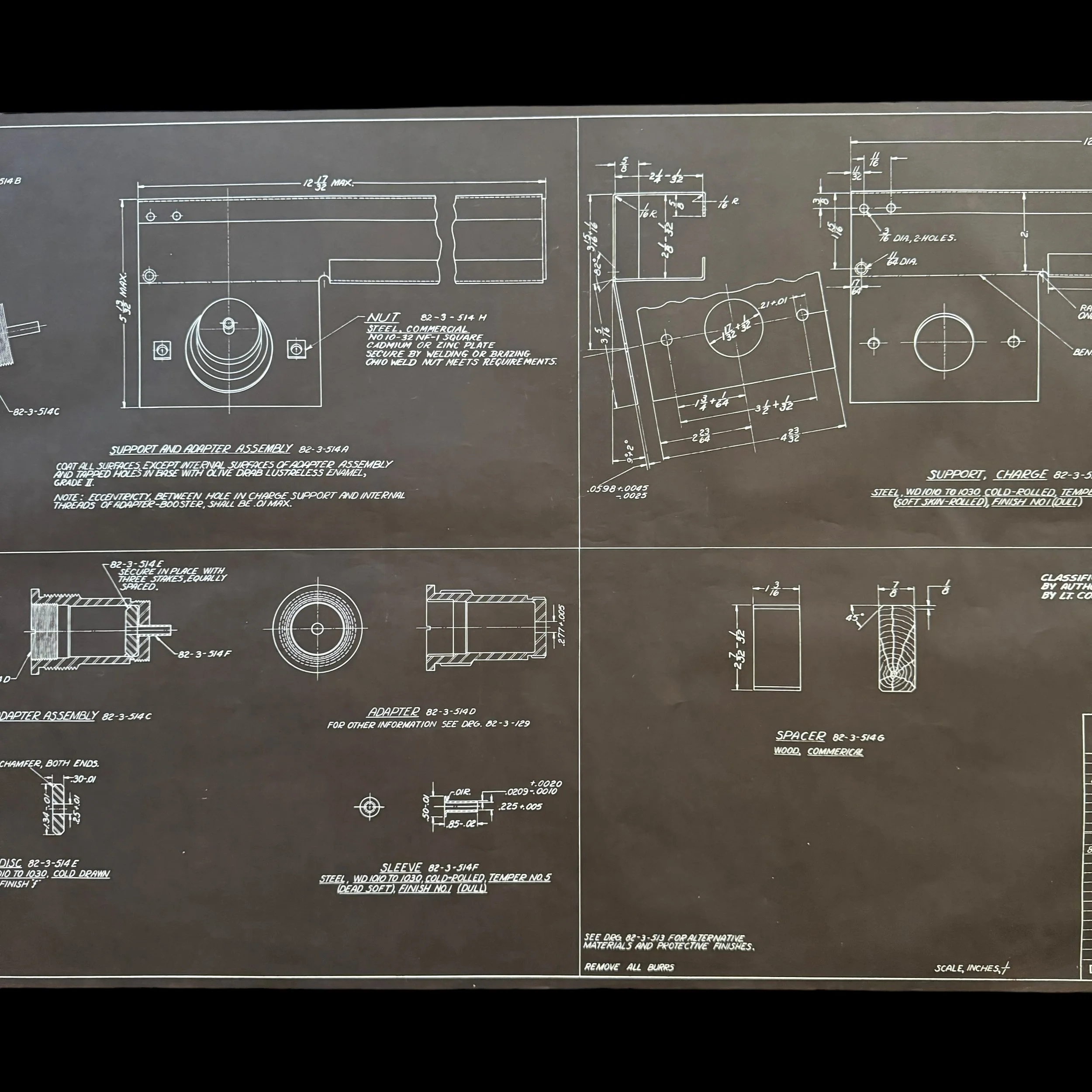
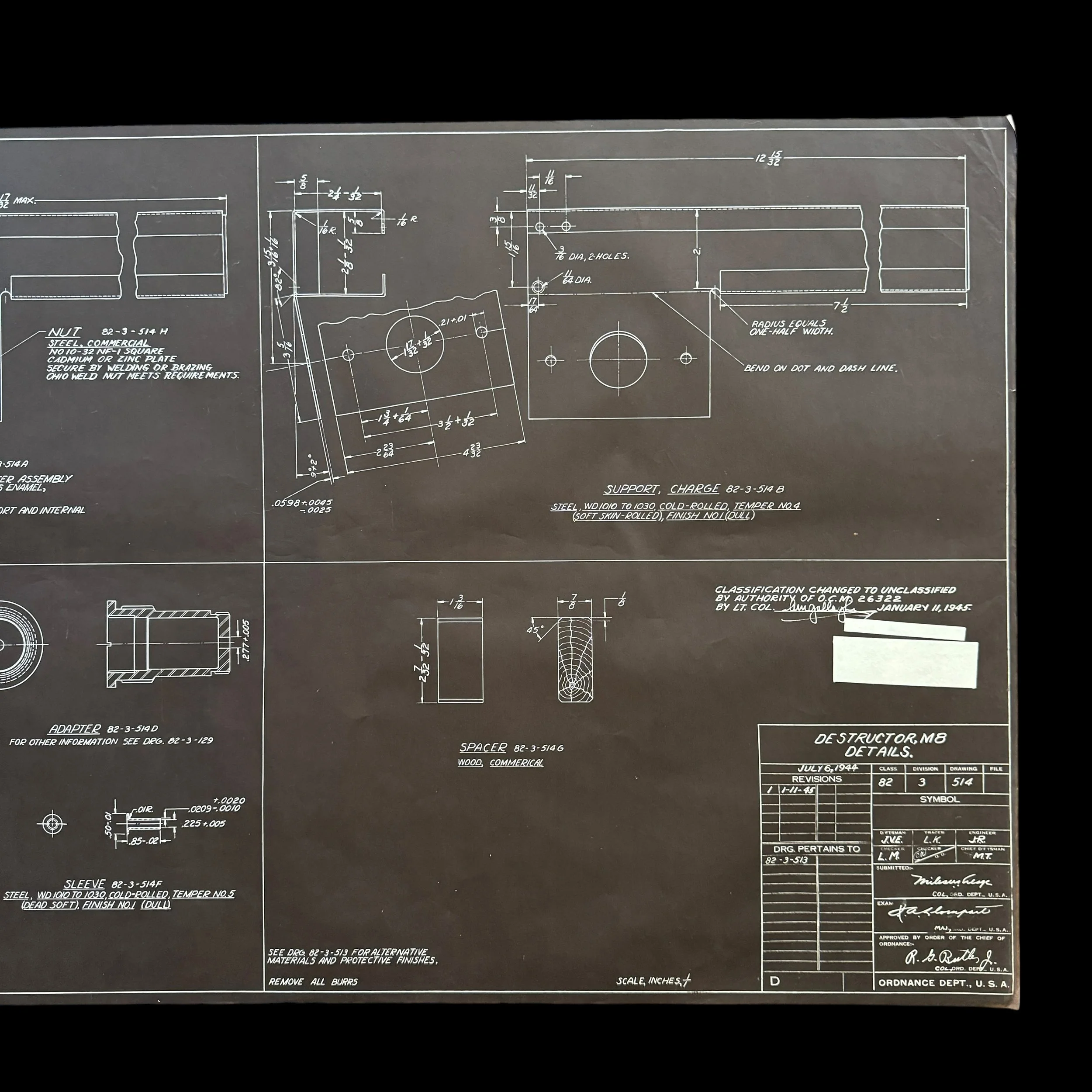
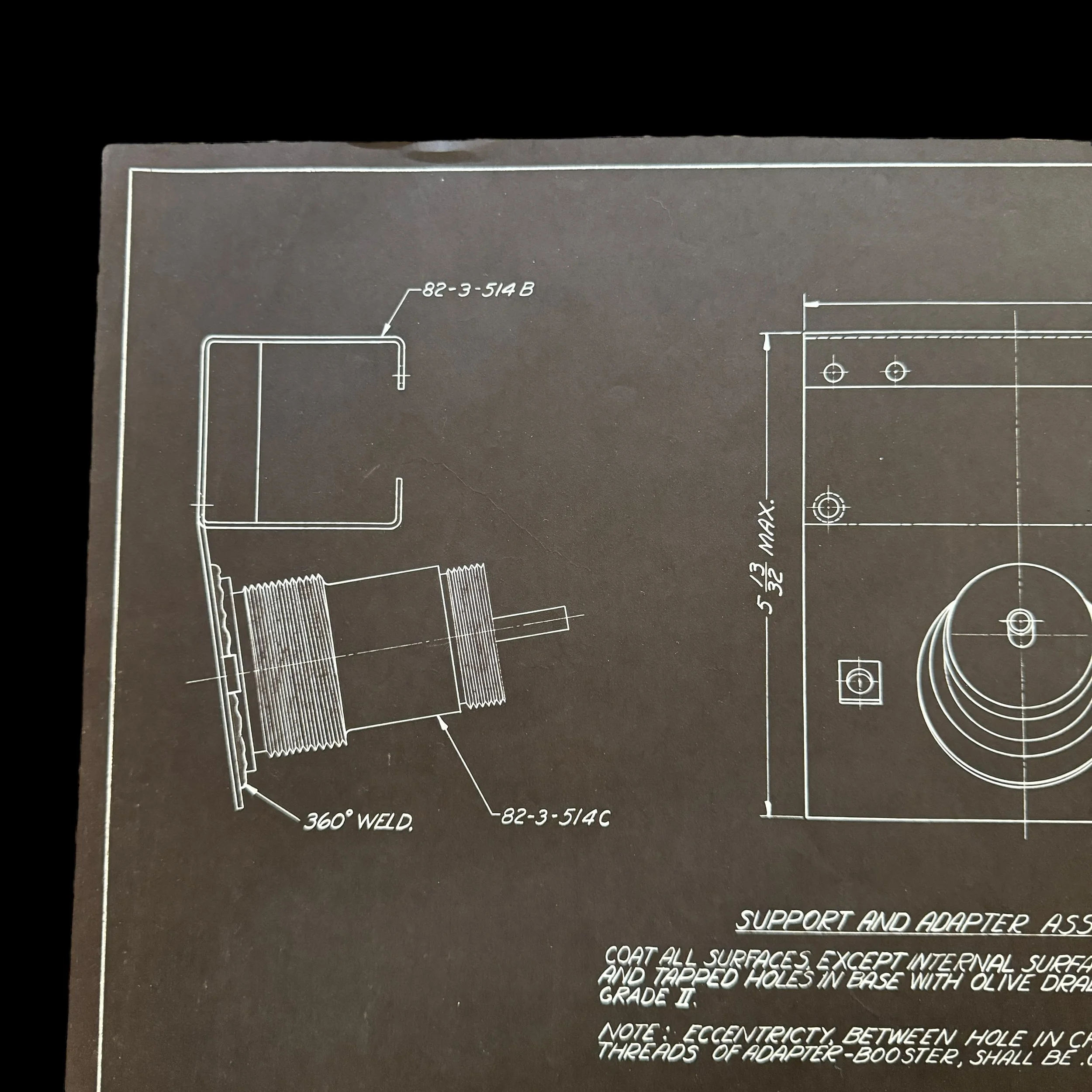
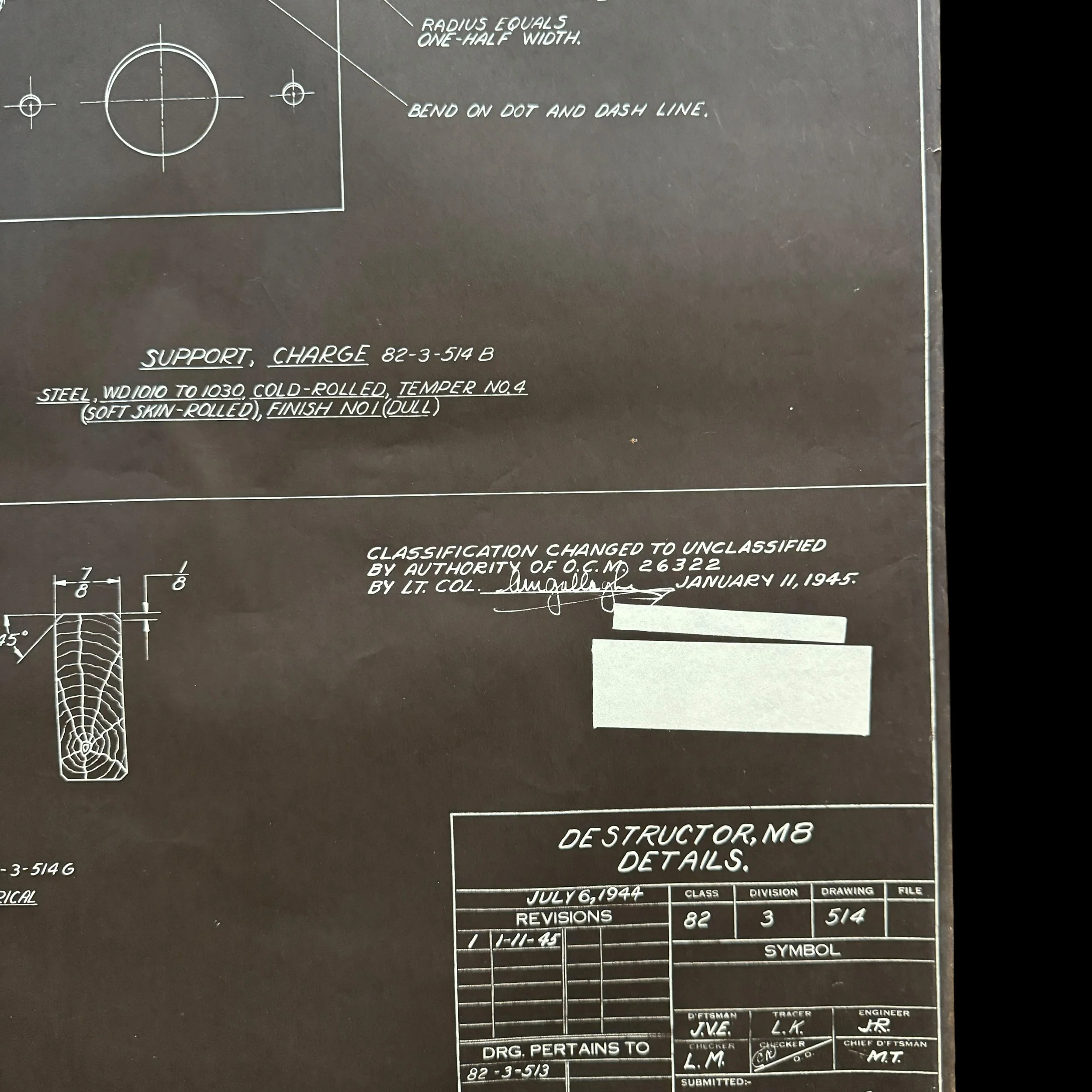
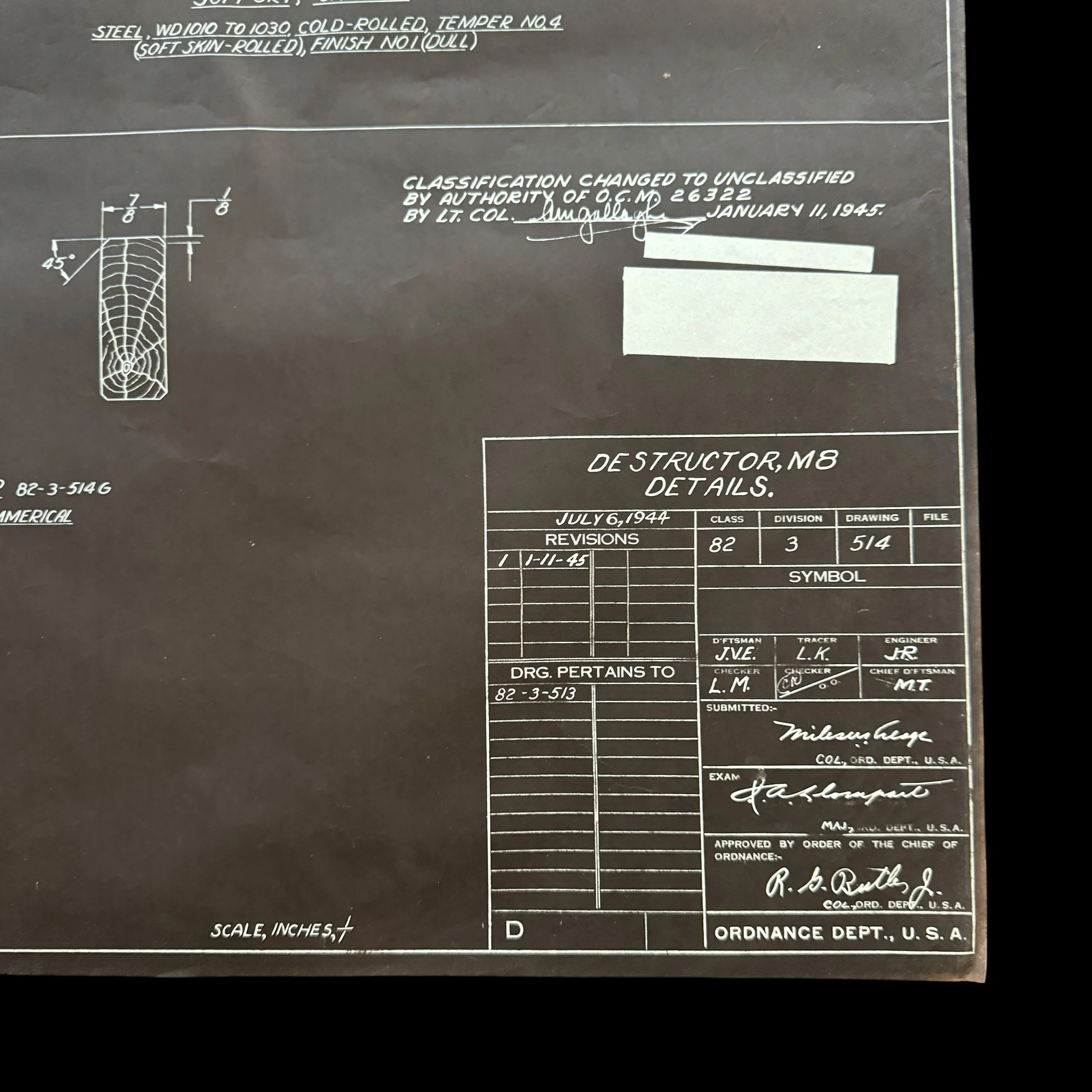

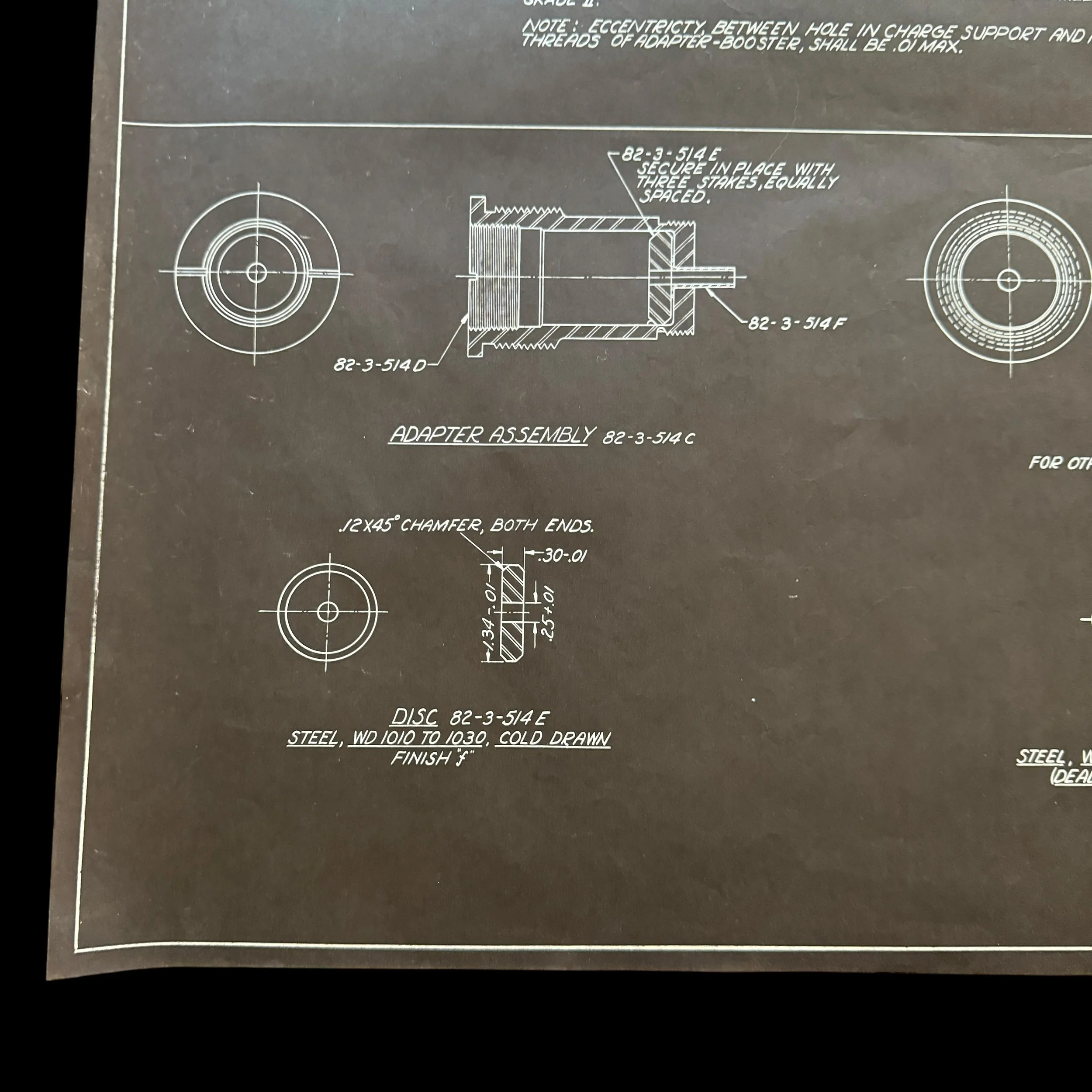
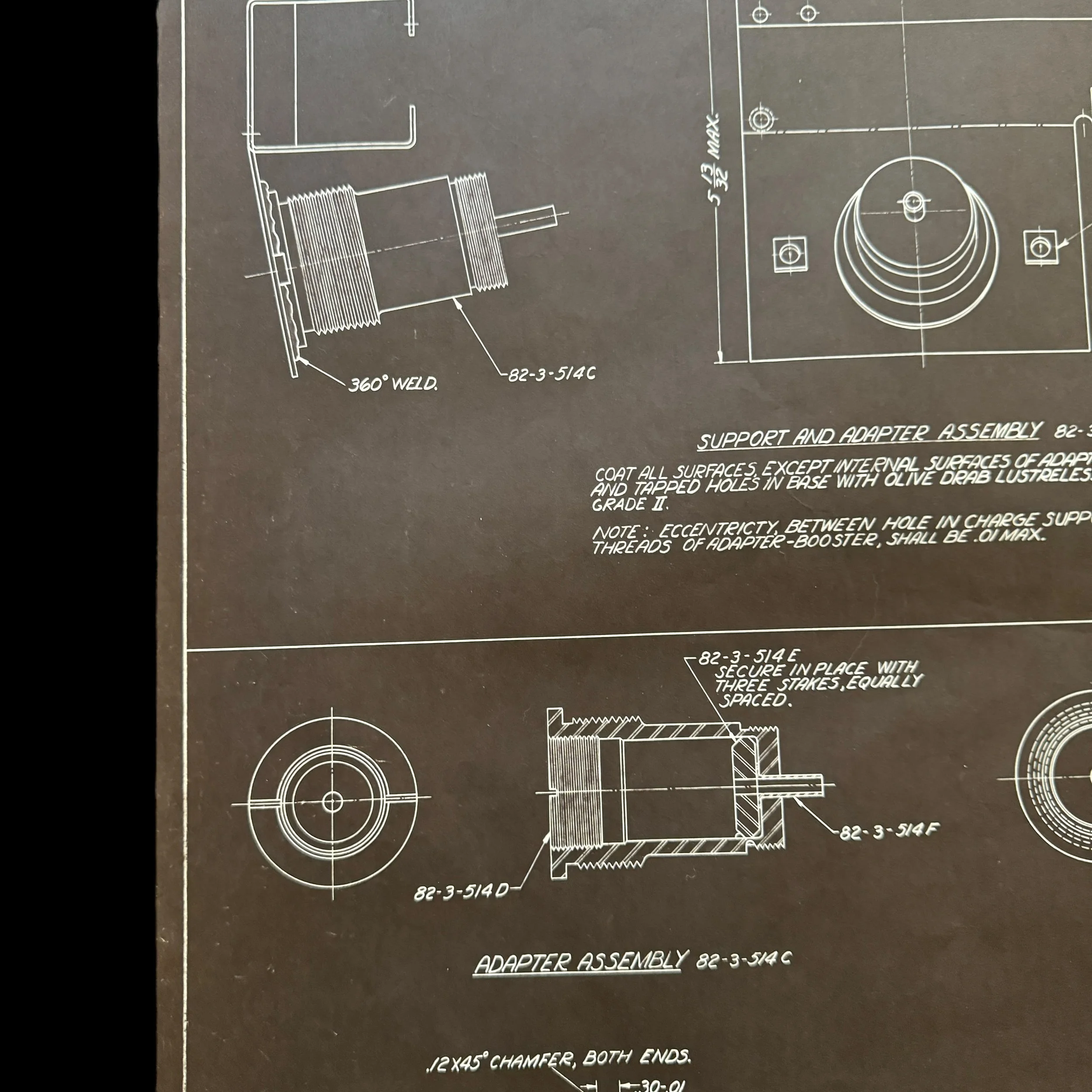

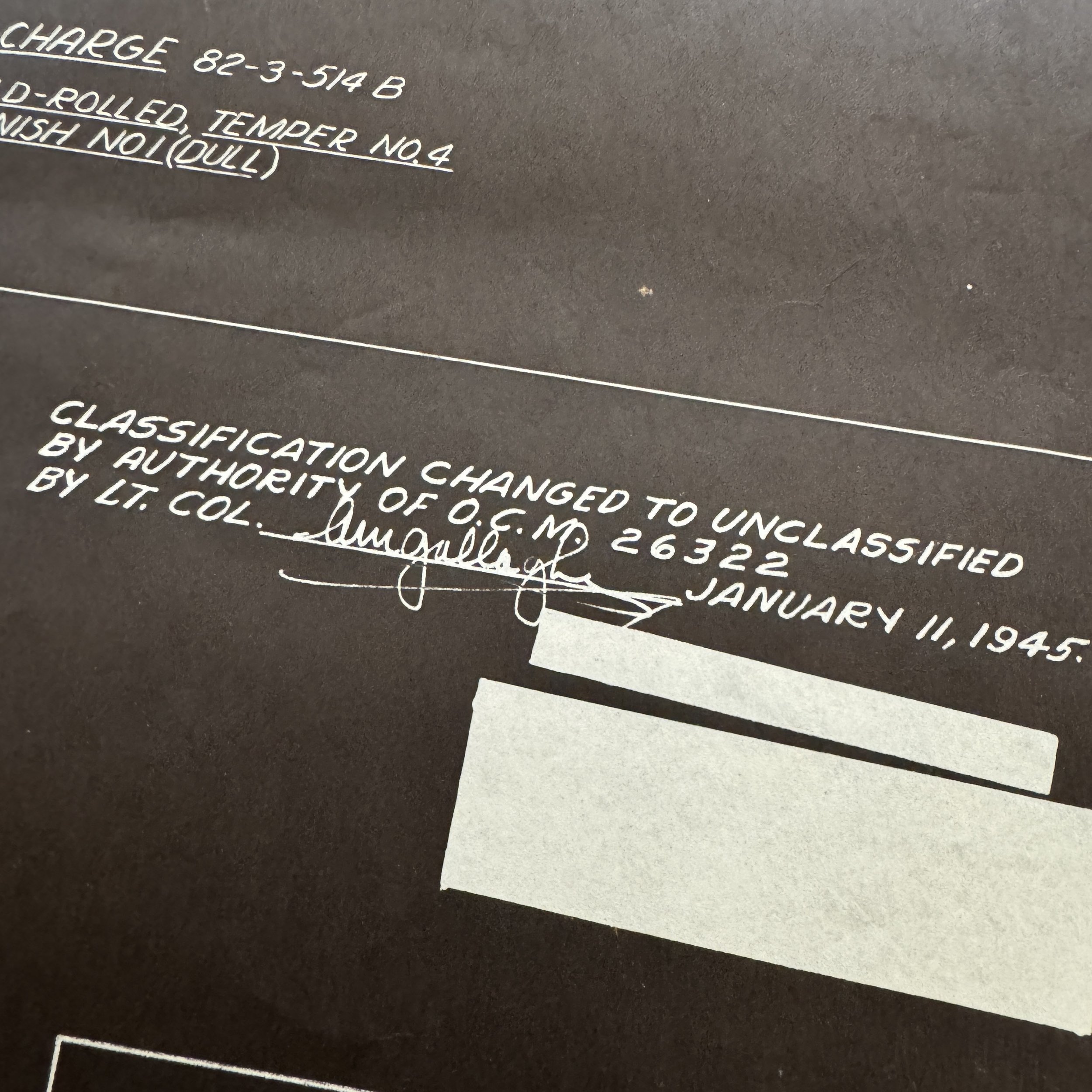
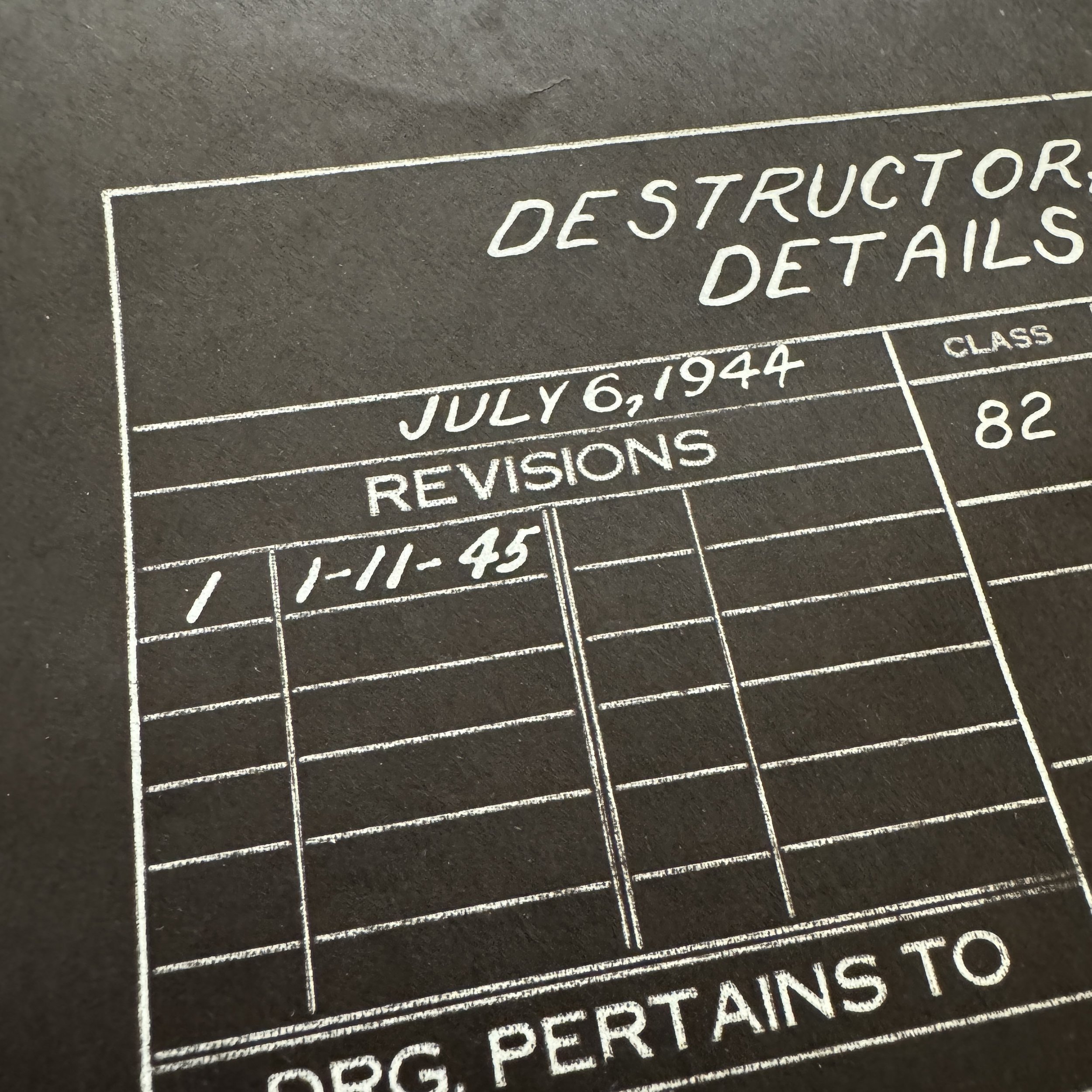
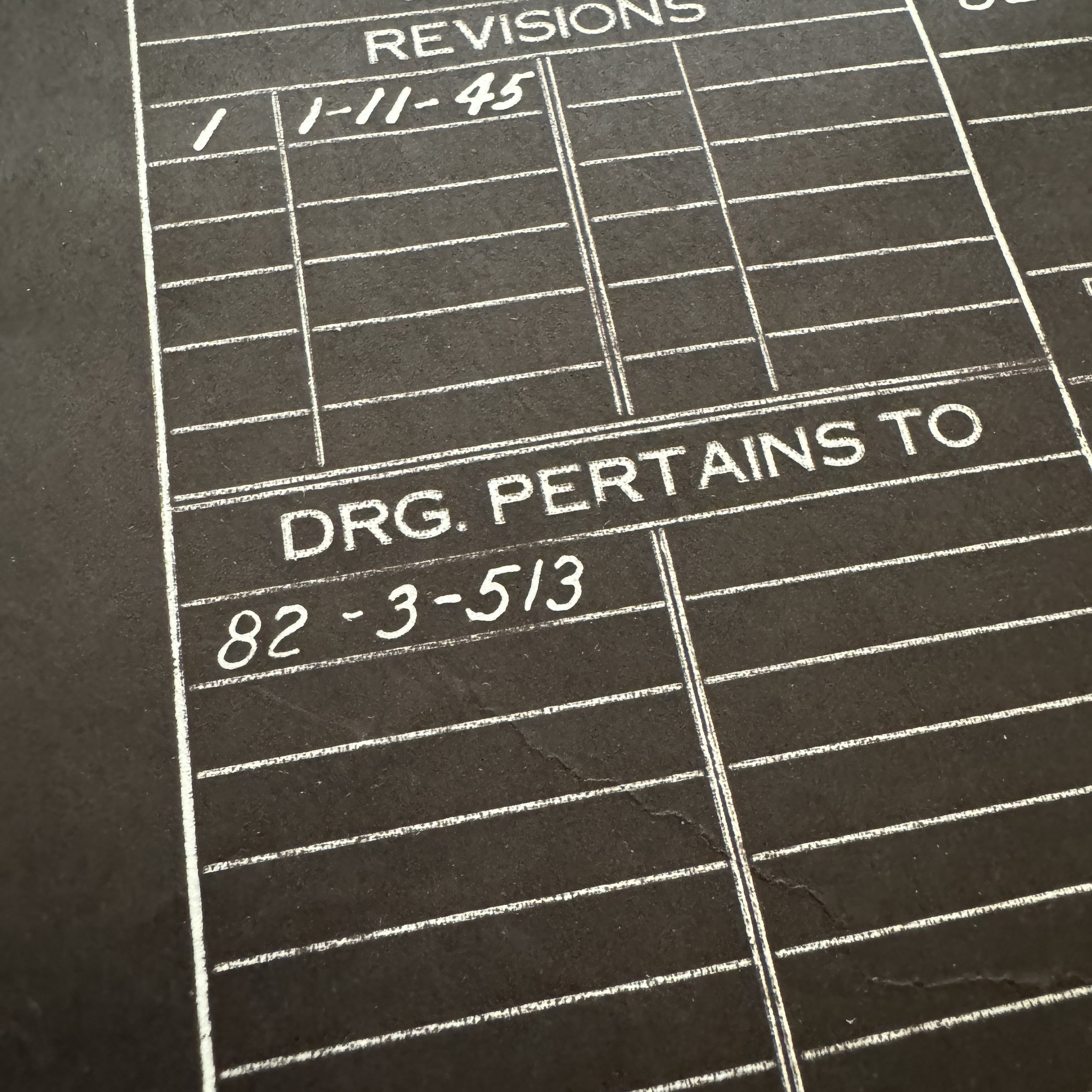
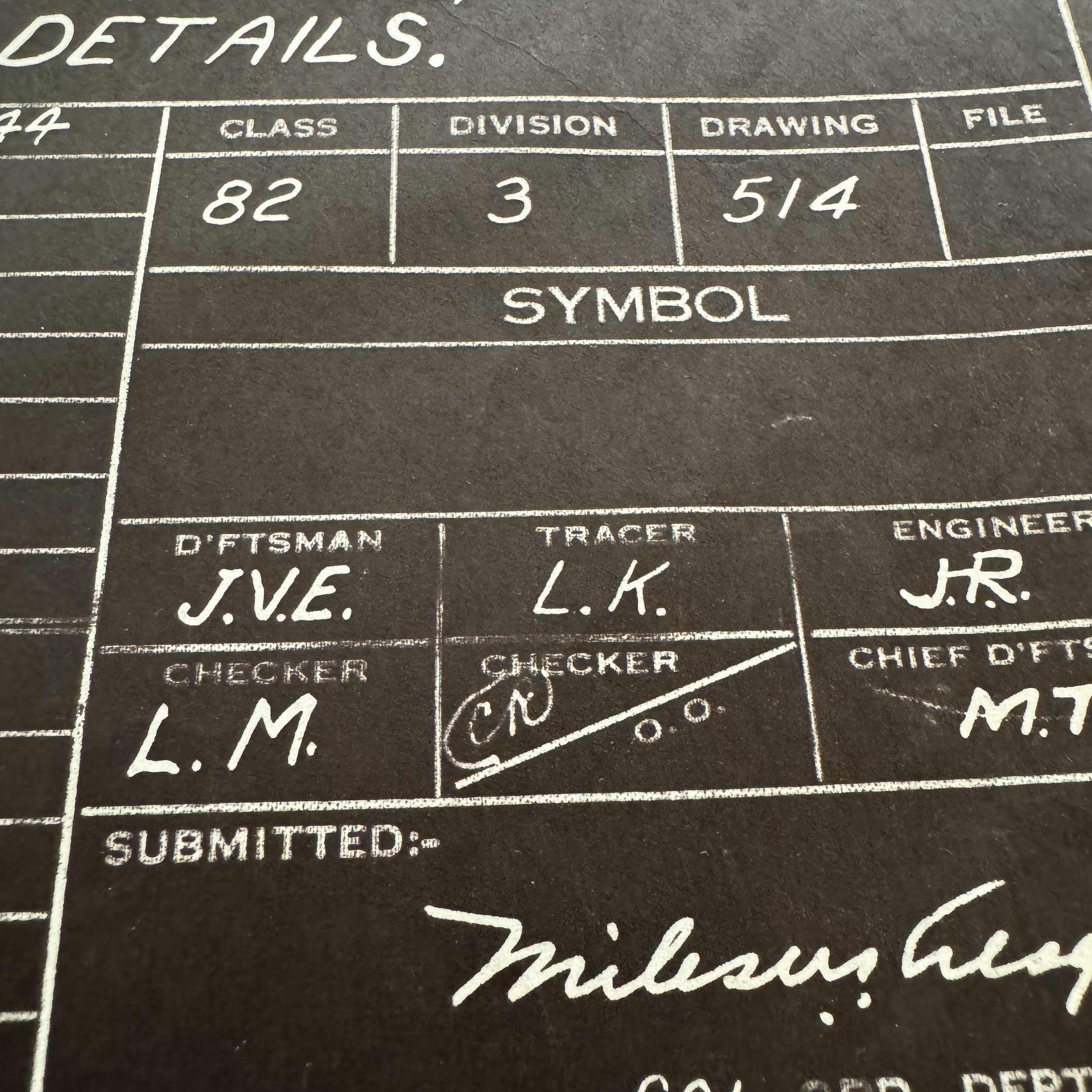
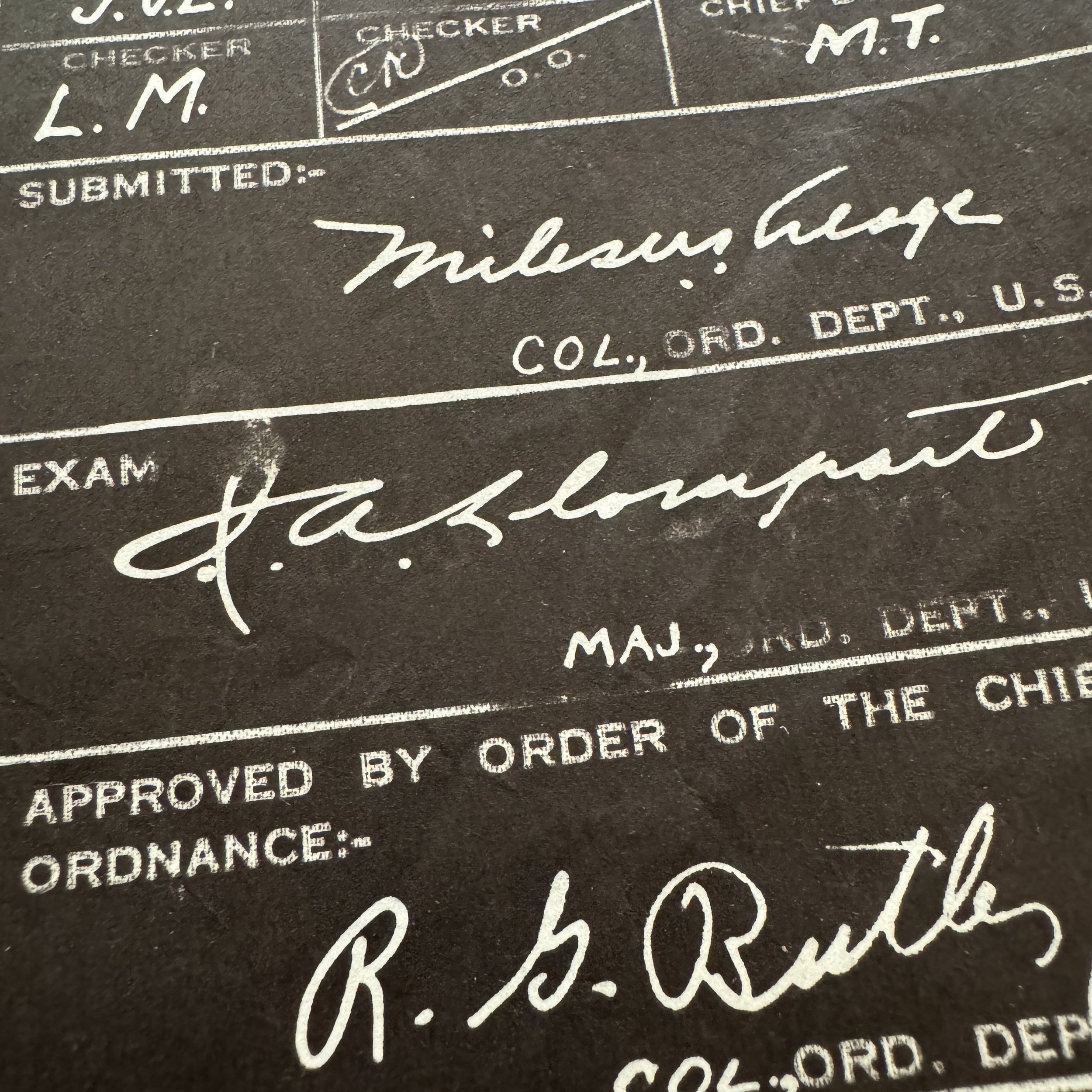
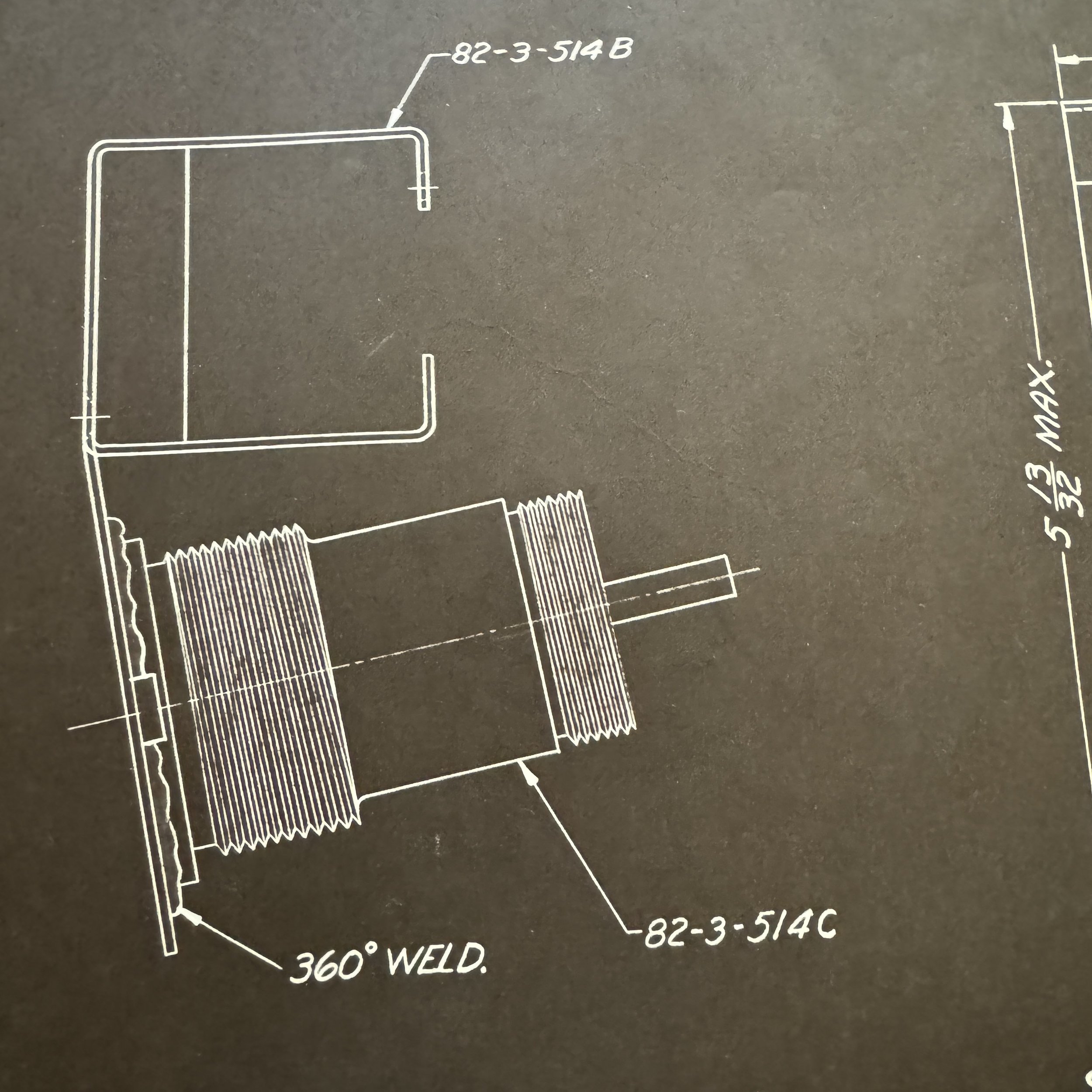
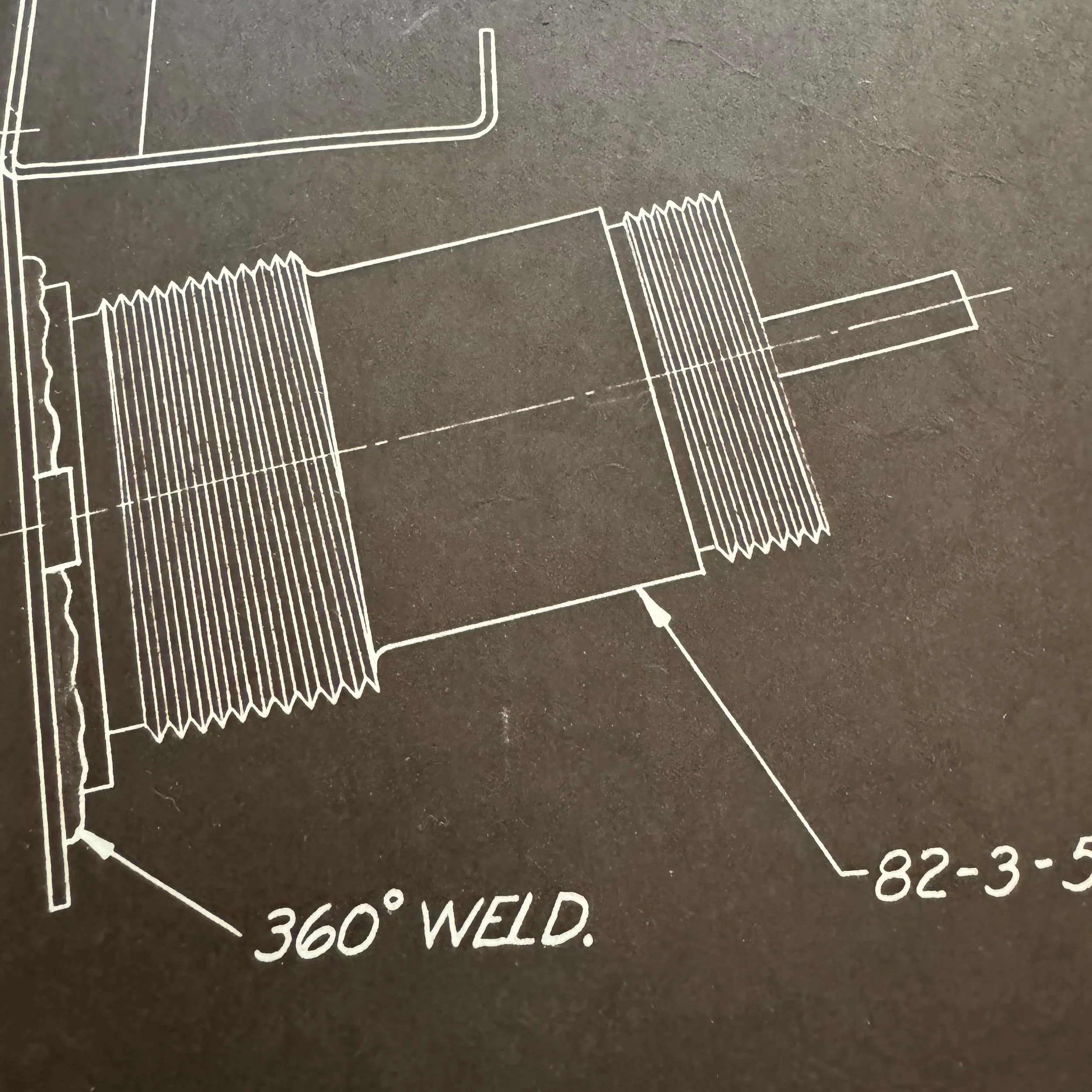
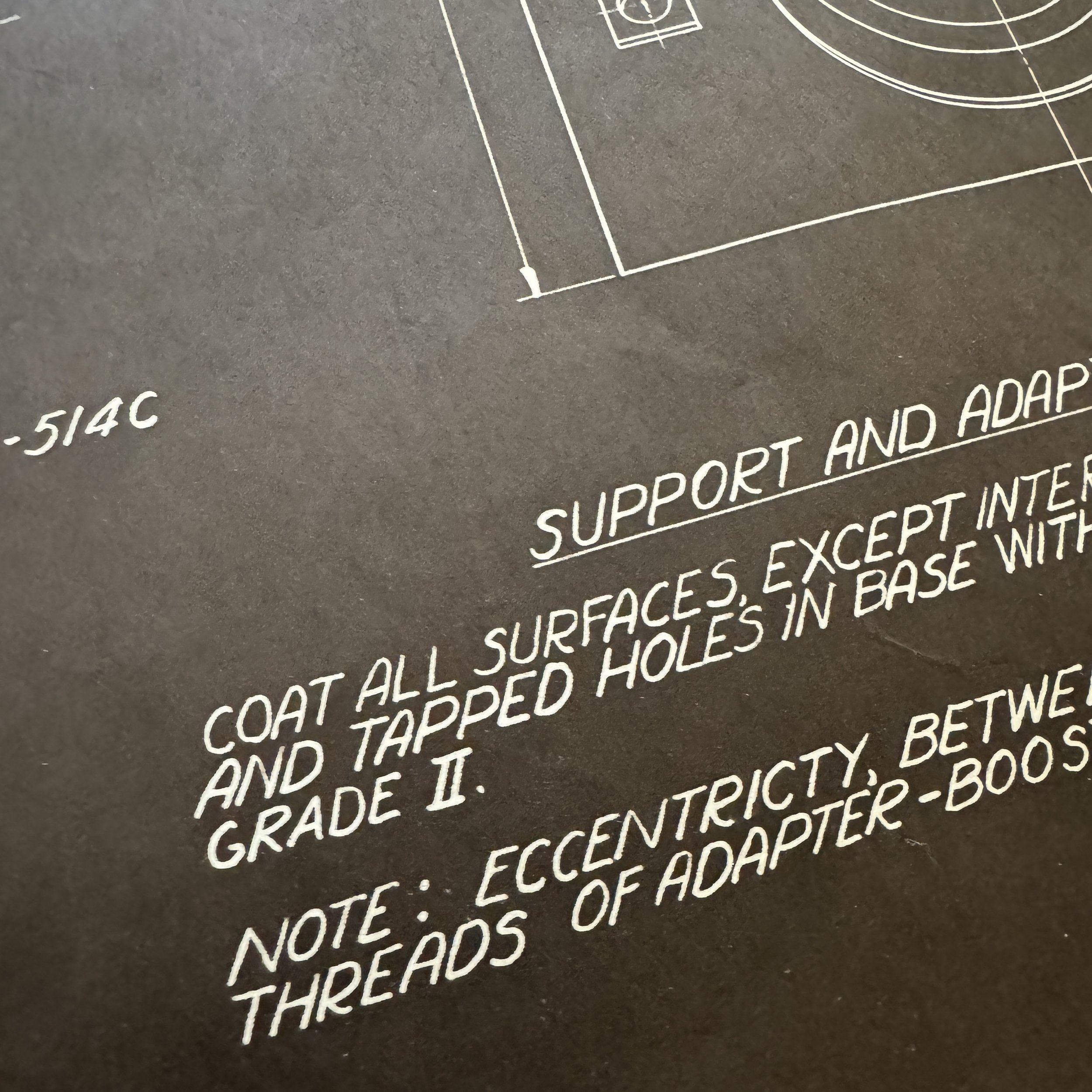
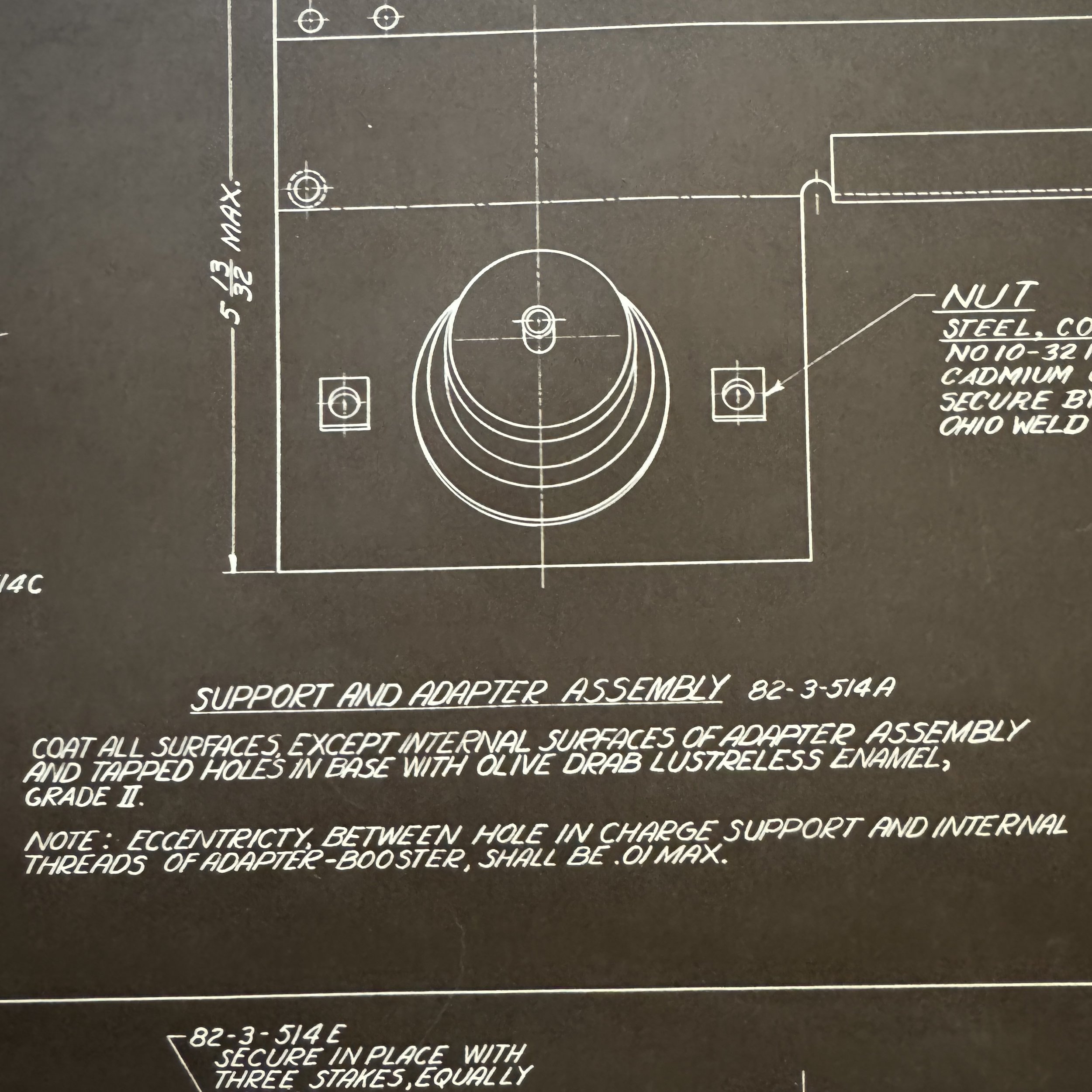

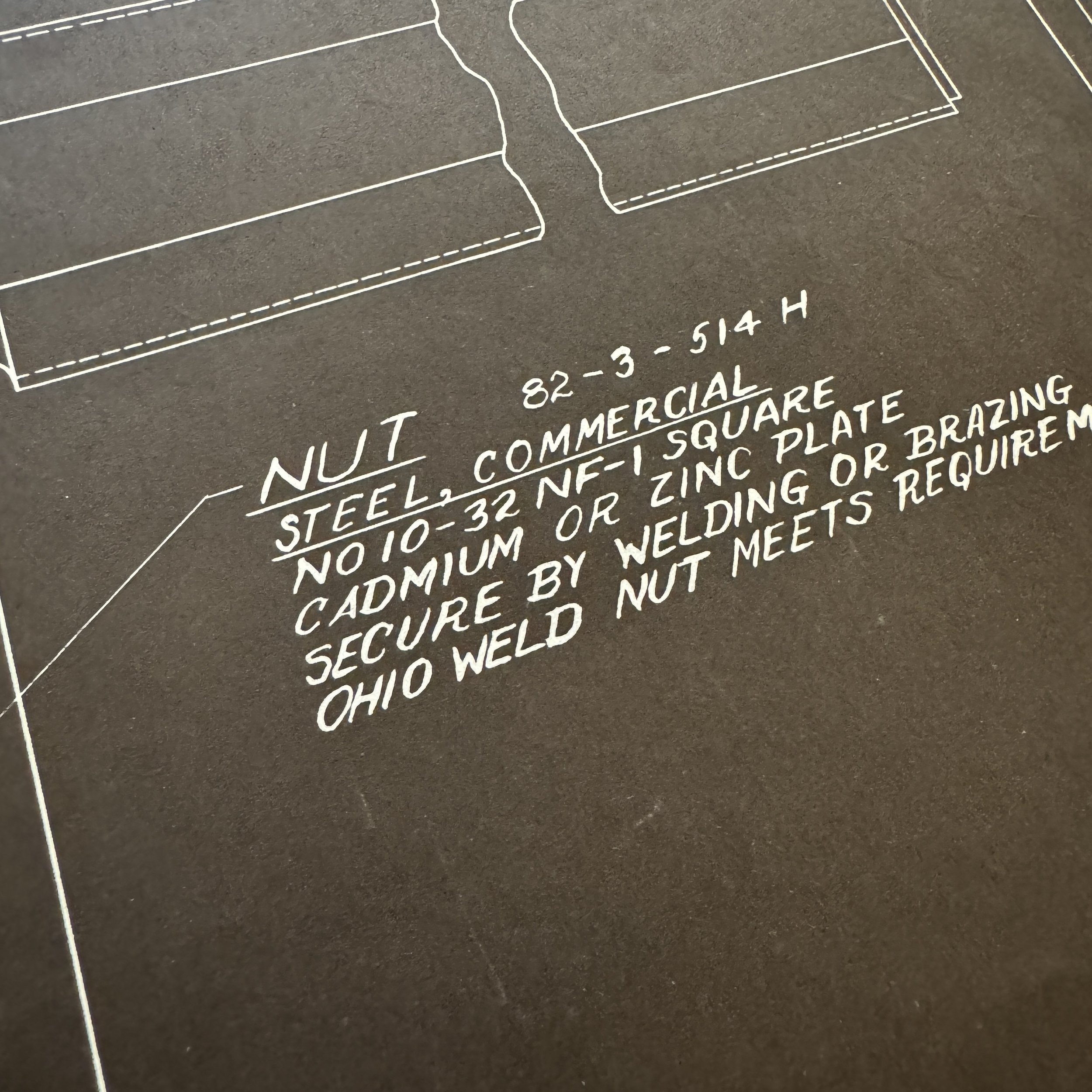
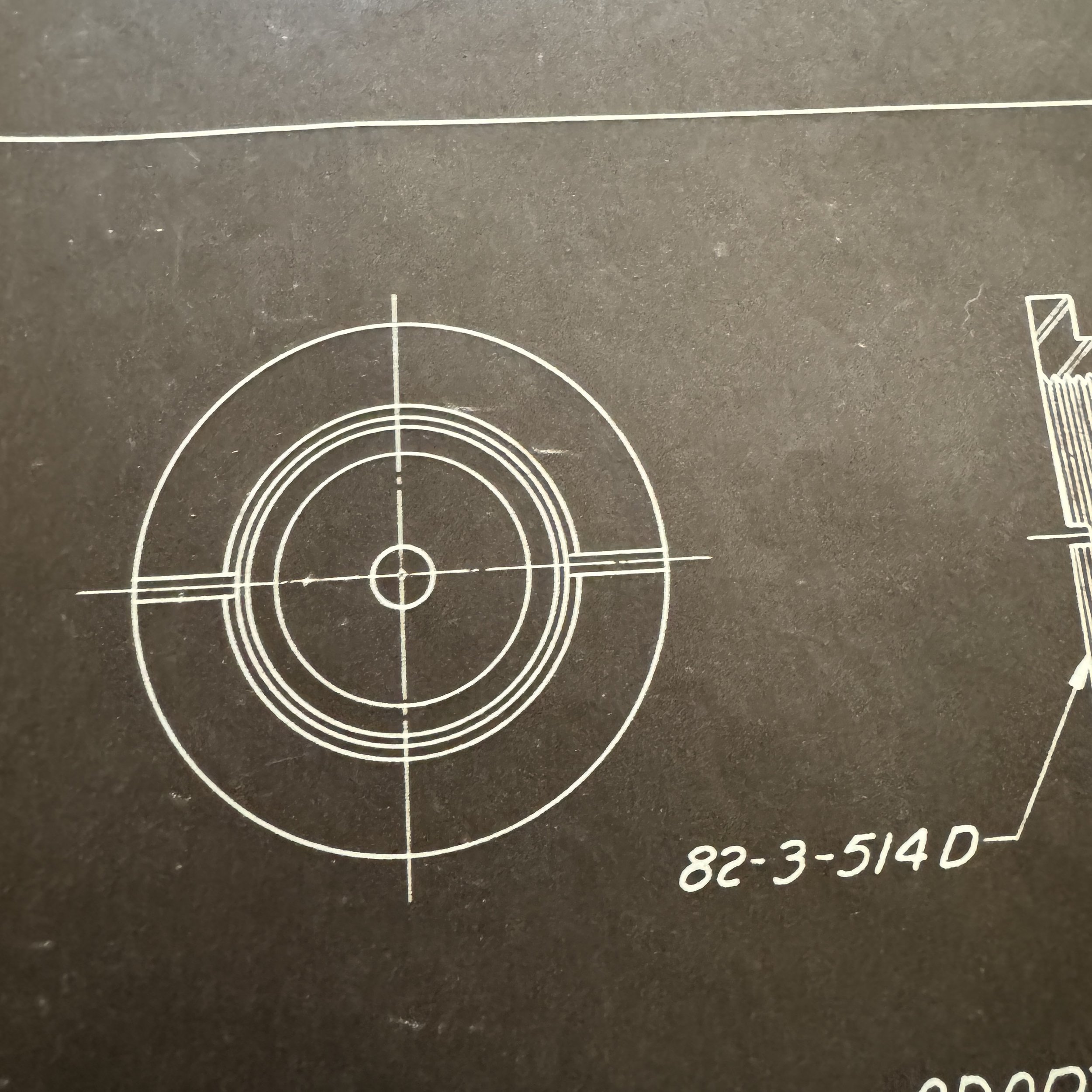
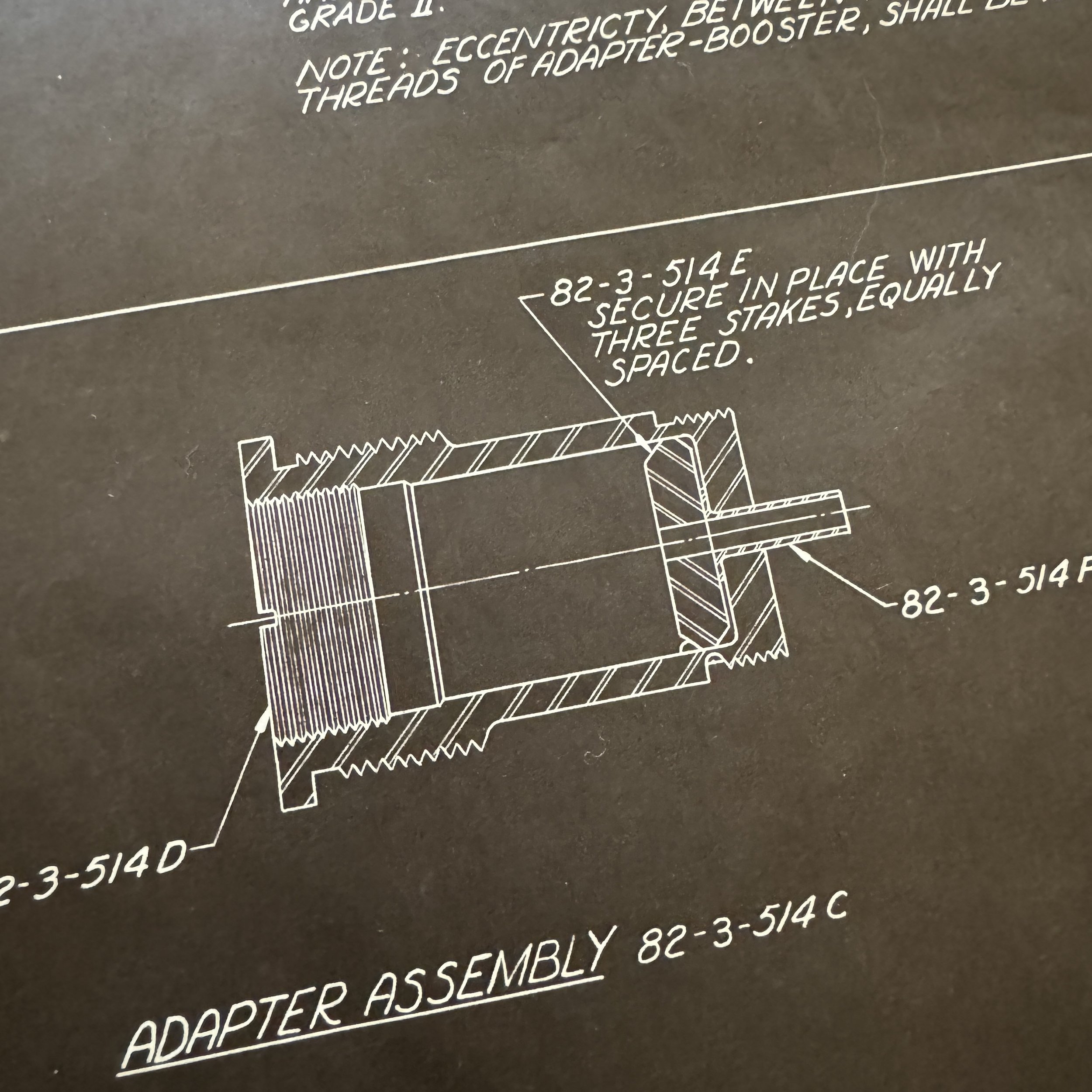
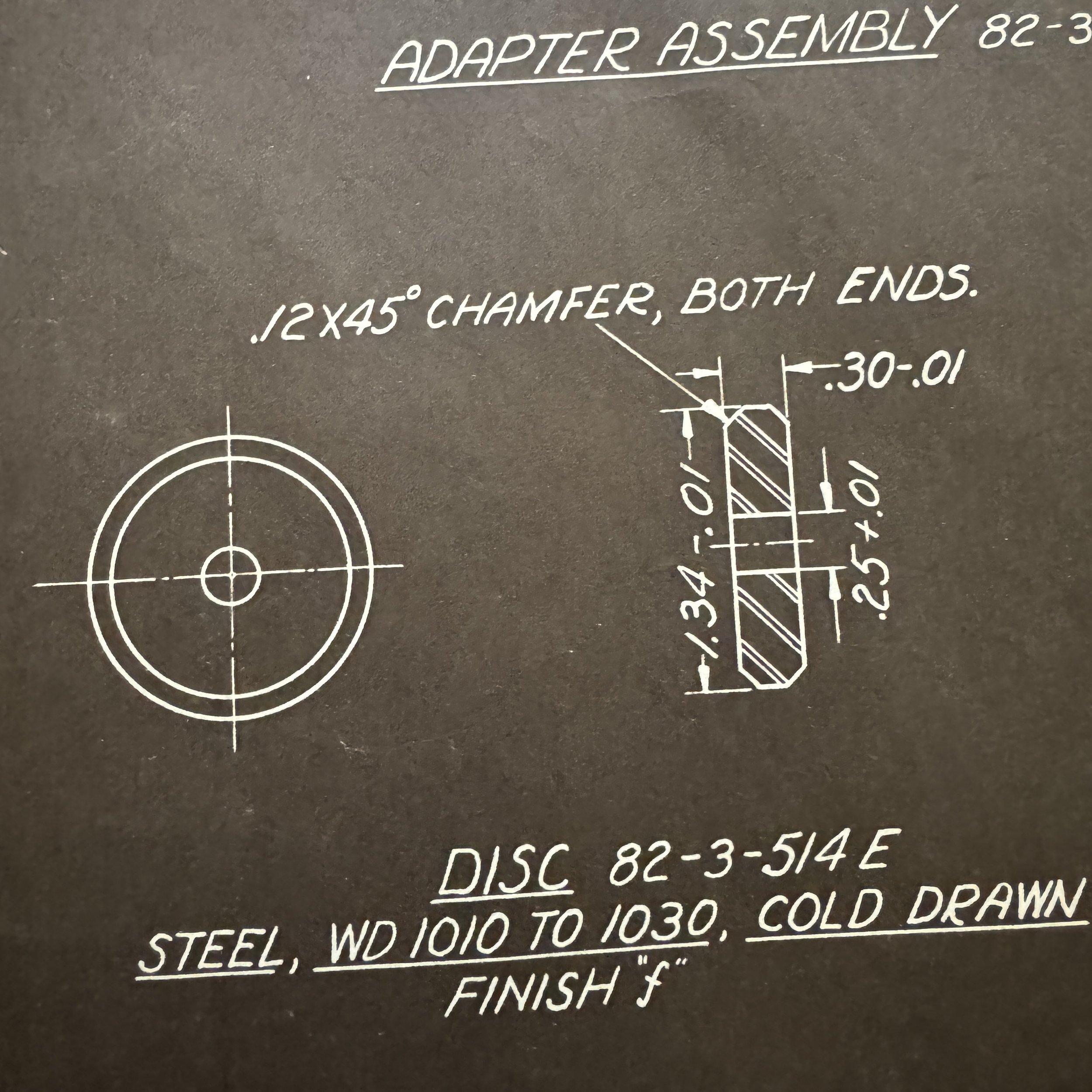
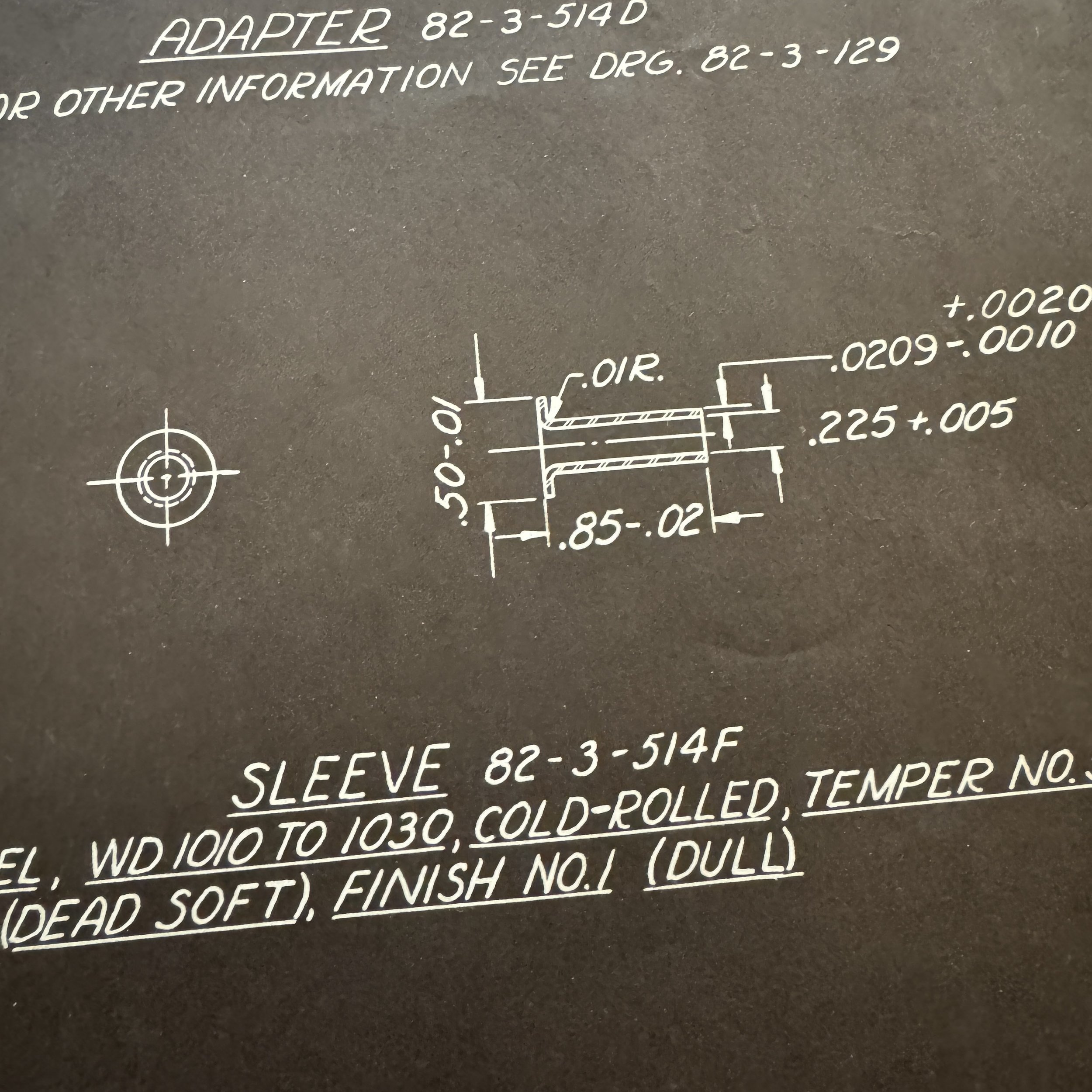
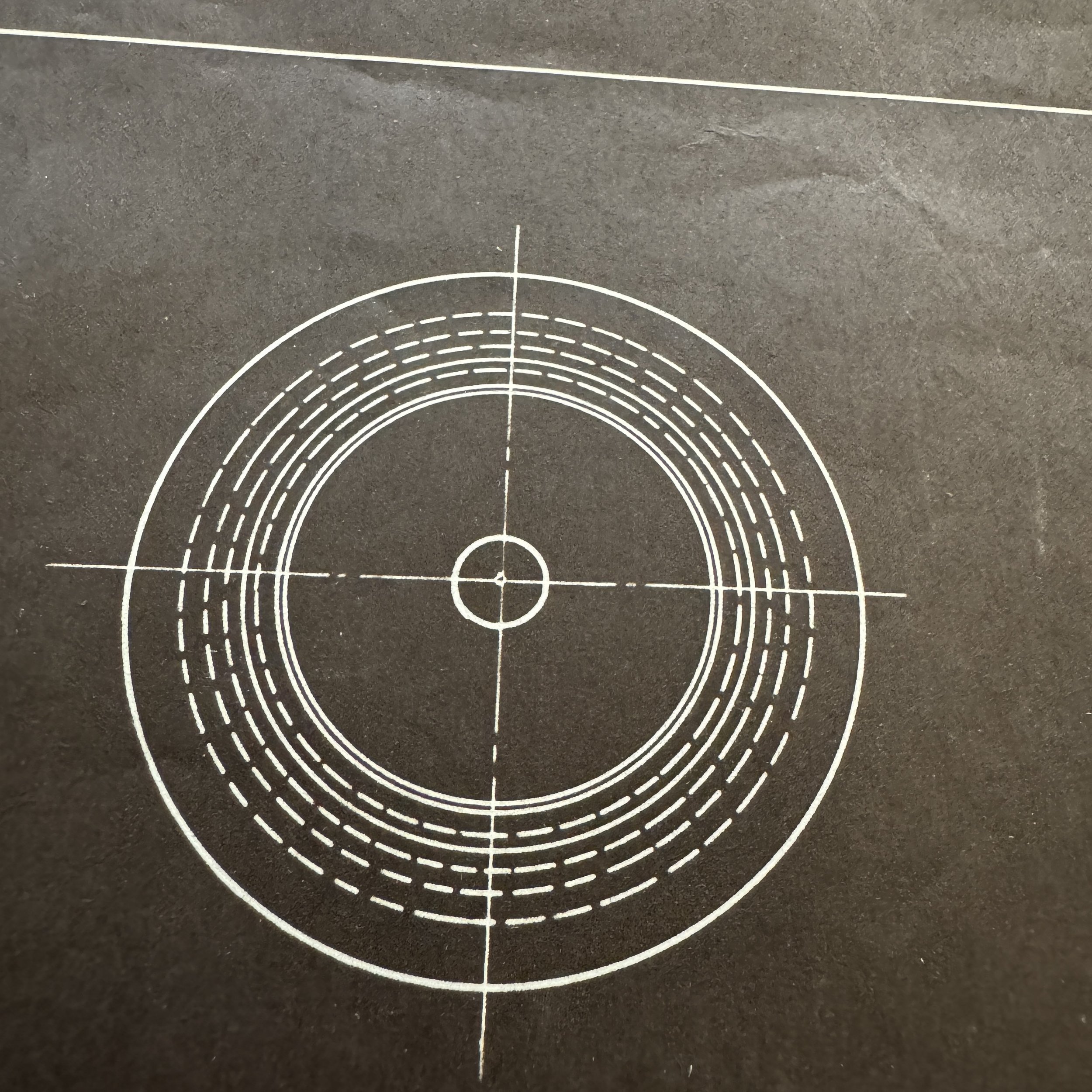
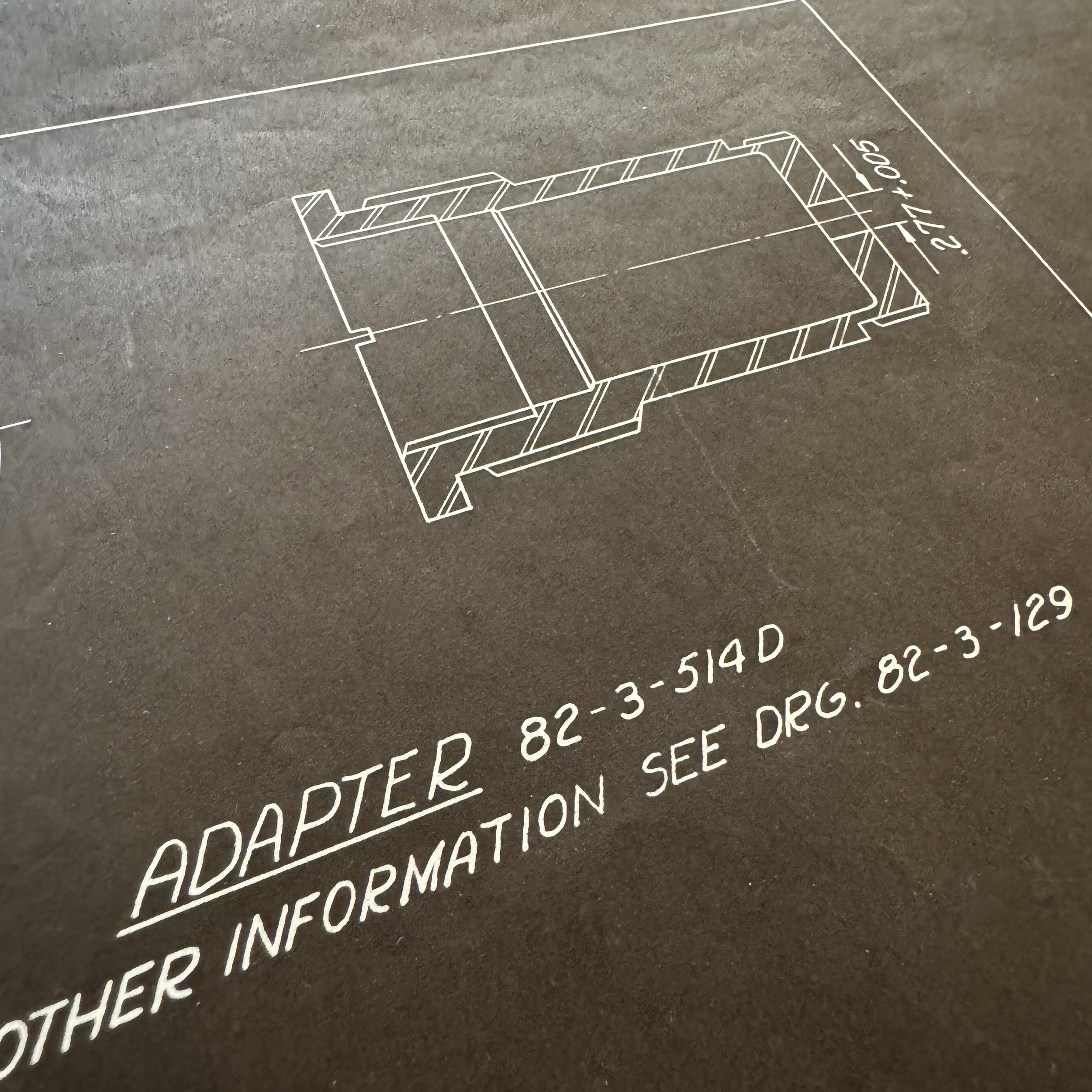
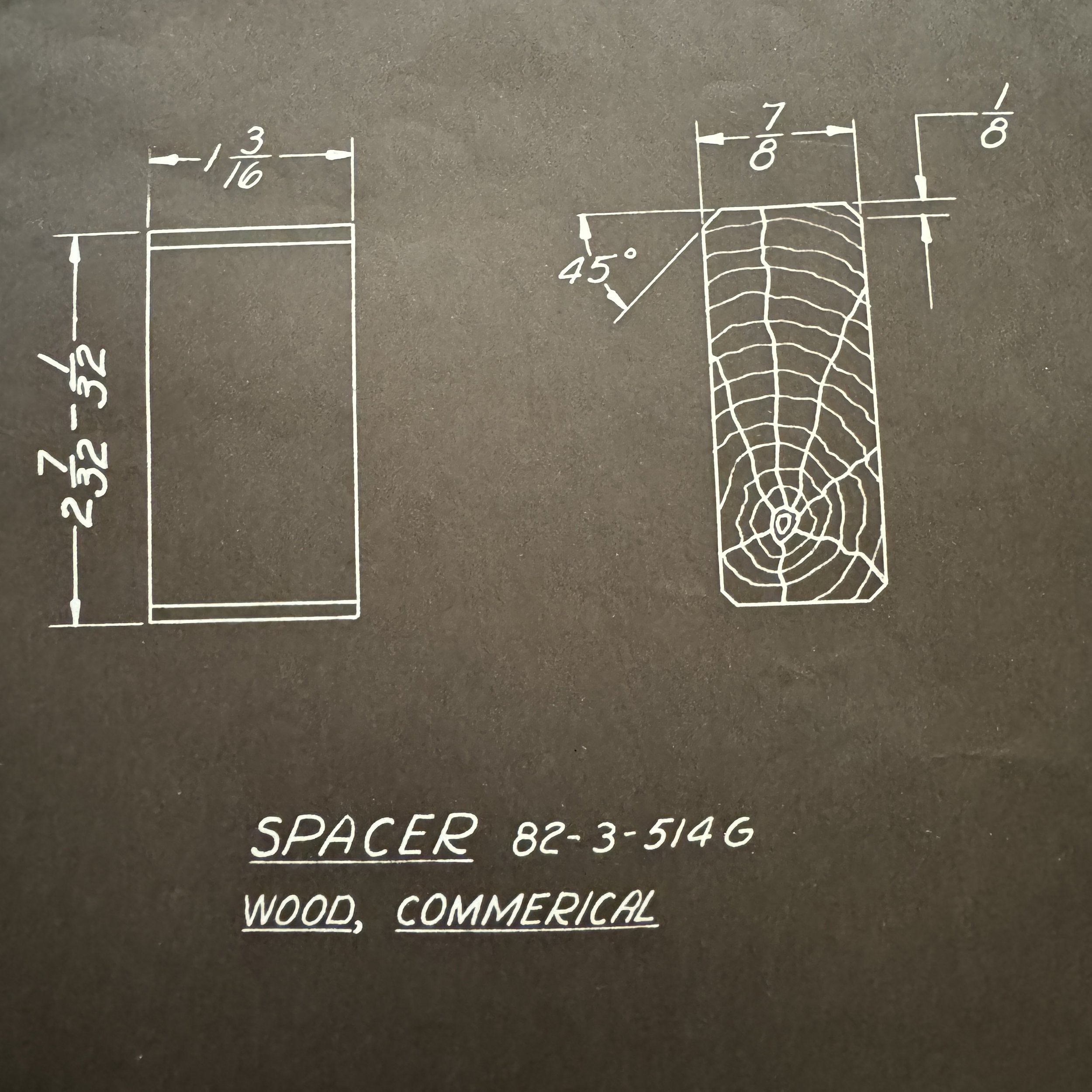
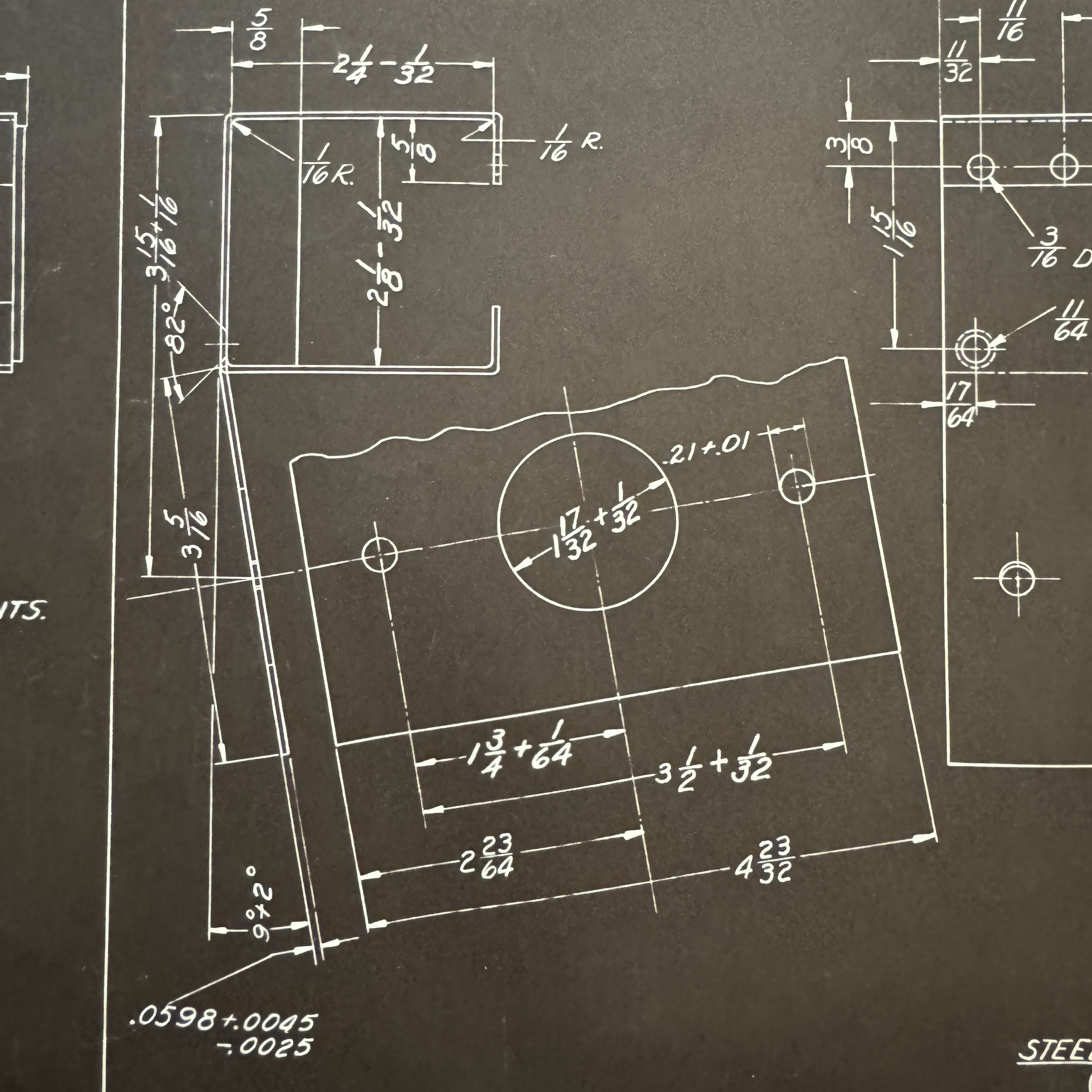
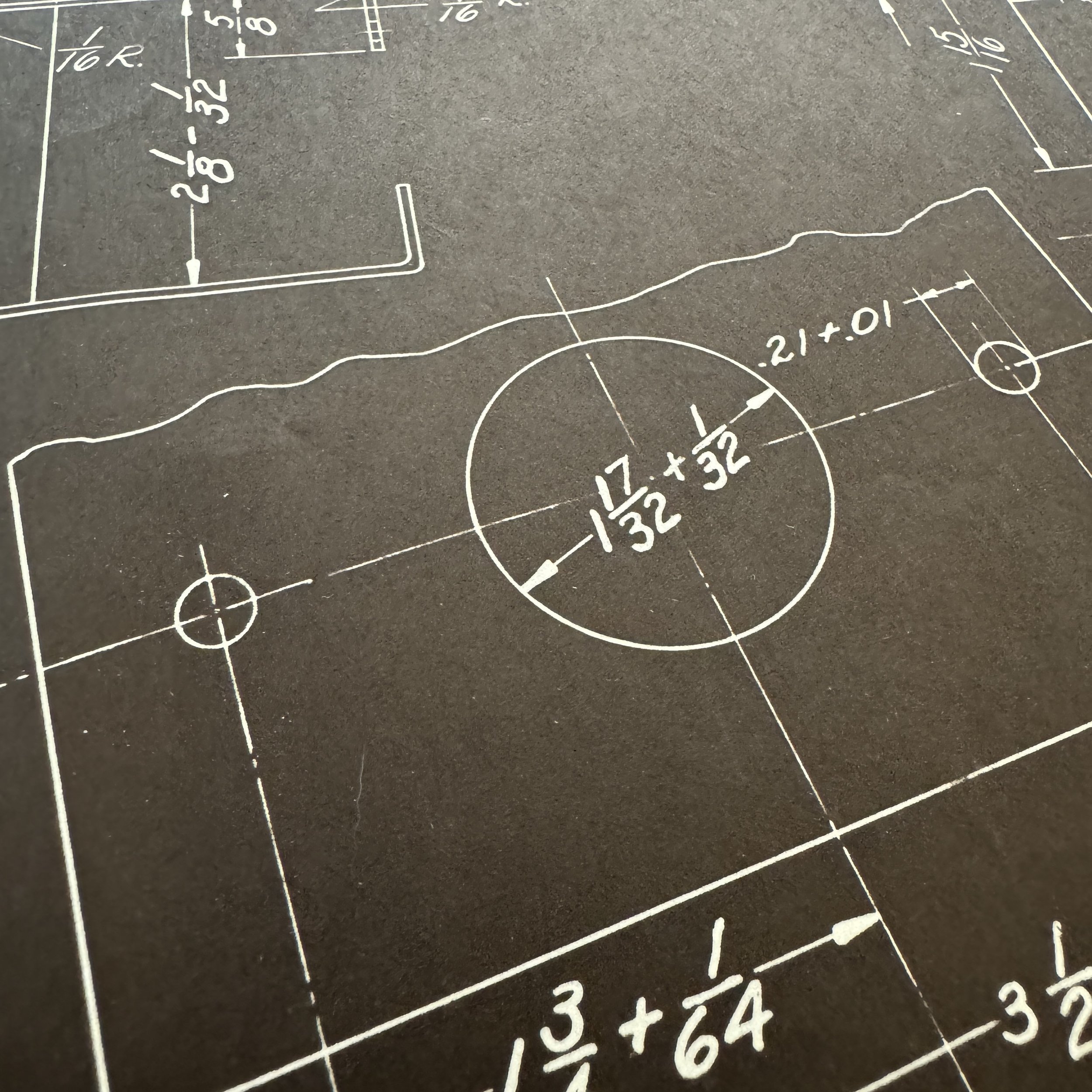
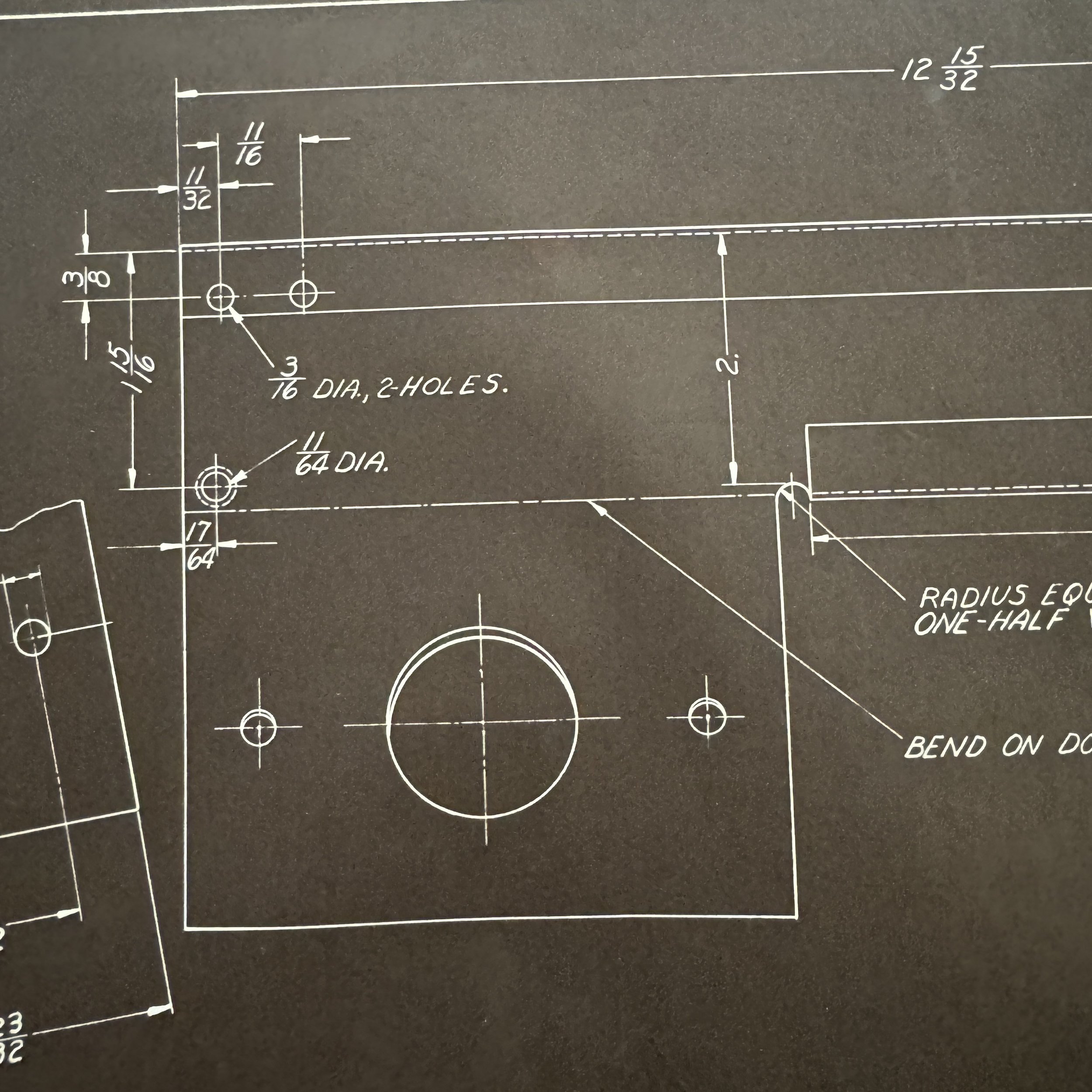
EXTREMELY RARE! WWII 1944-1945 "M8 Mine" Destructor Mechanism “Ordinance Department U.S.A.” Anti-Tank & Booby Trap Blueprint
Comes with a hand-signed C.O.A.
*This is a once-in-a-lifetime chance to own a truly one-of-a-kind artifact from one of the secret U.S. military innovations during WWII. This is the only known blueprint that is for sale in the public sector. Only a very small handful of these blueprints exist with all being in private museum collections.
Size: 23.5 × 40 inches
This extremely rare and museum-grade World War II artifact is an original “Ordinance Department U.S.A.” blueprint of the infamous M8 Mine (anti-tank & booby trap weapon). The M8 Mine was a versatile and crucial anti-tank weapon used by the U.S. Army during World War II, with its effectiveness largely attributed to the innovative M8 Destructor mechanism. The M8 Destructor allowed the mine to be pressure-activated and equipped with modular fuzes, enabling it to serve various roles, such as anti-tank, demolition, and booby traps. Its pressure sensitivity and anti-tampering design made it difficult to disarm, providing a psychological and physical deterrent against advancing armored forces. The M8 was strategically used in minefields to immobilize enemy tanks, particularly in key battles like the Normandy invasion, where it played a significant role in delaying German counterattacks. The Destructor's adaptability and multi-role functionality influenced post-war mine design, leaving a lasting impact on military technology.
This original Ordinance Department blueprint was created on July 6th, 1944 and was created with updated improvements to the M8 Destructor mechanism from the previous Ordinance Dept. revision done on January 11th, 1945.
The M8 Mine in World War II: A Key Component of Anti-Tank Warfare with Emphasis on the M8 Destructor
During World War II, the rapid advancement of armored warfare prompted the development of various countermeasures, one of which was the deployment of landmines to slow or destroy enemy vehicles. Among the different types of anti-tank mines used by the U.S. Army during the war, the M8 Mine played a significant role. It was particularly valued for its versatility and the technological innovations that went into its development, notably the M8 Destructor, a crucial aspect of this mine that provided enhanced effectiveness in the battlefield.
Background of Anti-Tank Mines in World War II
World War II saw the widespread use of armored vehicles and tanks, which could easily overwhelm infantry and traditional fortifications. In response, nations developed anti-tank weapons and systems, including anti-tank rifles, artillery, and landmines. Landmines offered several advantages: they were relatively inexpensive, could be produced in large quantities, and were highly effective in immobilizing or destroying tanks and vehicles.
Anti-tank mines typically used large quantities of explosives, which, when detonated beneath the heavy weight of a vehicle, would cause severe damage to its structure, track systems, and crew. The U.S. Army developed a range of anti-tank mines, with the M8 Mine standing out due to its sophisticated design and the incorporation of the M8 Destructor.
Design of the M8 Mine
The M8 Mine was classified as a lightweight, anti-tank mine, designed primarily for use against armored vehicles. The mine had a simple cylindrical shape, making it easy to produce and deploy in large numbers. Its body was constructed from metal, but it could be camouflaged or buried in such a way as to make it nearly invisible to advancing forces. The mine was relatively small, allowing for easy transportation and rapid deployment in the field.
The M8 was pressure-activated, relying on the weight of a vehicle to trigger the detonation. When the tank or armored vehicle rolled over the mine, the pressure would compress a striker mechanism, igniting the detonator and causing the mine to explode. The explosive charge within the mine was powerful enough to penetrate the armor of most tanks and vehicles, making it a highly effective weapon on the battlefield.
The Destructor Within the M8 Mine: A Technological Innovation
The key to the M8 Mine’s enhanced functionality lay in the Destructor, a crucial internal mechanism designed to improve its overall effectiveness and adaptability. The term “Destructor” referred to the fuse mechanism within the mine, which controlled the detonation process. While landmines in earlier conflicts used simpler triggering mechanisms, the Destructor added a layer of complexity and versatility that made the M8 Mine stand out.
The M8 Destructor was essentially a specialized type of fuze that could be used in different configurations to create various types of mines. It was used not only in anti-tank mines but also in demolition charges, naval mines, and even booby traps. This modular design allowed the M8 to serve multiple roles on the battlefield, adding flexibility to how engineers and soldiers could deploy it in combat.
Key characteristics of the M8 Destructor included:
Modular Fuse System: The Destructor could be fitted with different detonators or trigger mechanisms depending on the tactical need. This allowed the M8 to function as a pressure-activated anti-tank mine, a timed explosive, or a booby trap, depending on how it was set up in the field. This versatility was critical in dynamic battle conditions where adaptability was key.
Pressure Sensitivity: The M8 Destructor was designed to detonate when subjected to a specific amount of pressure, usually from the weight of a tank or armored vehicle. However, it could be adjusted to trigger at different weights, allowing it to be used against lighter vehicles or even infantry, depending on the scenario.
Anti-Tampering Mechanisms: One of the critical features of the Destructor was its anti-tampering design. This prevented enemy soldiers from disarming the mine once it was in place. If an attempt was made to tamper with or move the mine, the Destructor could cause an immediate detonation, making it a dangerous and unpredictable threat for enemy engineers.
Multiple Trigger Options: The M8 Destructor could be outfitted with different types of fuzes to provide either instantaneous detonation or a delayed explosion. This allowed soldiers to create timed explosions, which could be used to control when and where the mine would detonate, adding to the tactical options available during operations.
Tactical Use of the M8 Mine and Destructor
The M8 Mine with its Destructor was primarily used as an anti-tank weapon. It was strategically placed in key areas where enemy tanks were expected to advance, such as roads, bridges, and chokepoints. One of the most common tactics involved placing the mine in such a way that it would target the tracks of a tank, immobilizing it and making it vulnerable to other weapons like artillery or airstrikes.
The M8 Mine’s light weight made it easy for soldiers to quickly deploy in large numbers, forming extensive minefields. These minefields served both offensive and defensive purposes, from delaying enemy tank columns to protecting key positions from rapid assault. Once deployed, the M8 Destructor made it nearly impossible for the enemy to safely clear the mines without risking detonation, adding psychological pressure to the advancing forces.
In addition to its use as an anti-tank weapon, the M8 and its Destructor were also utilized in booby traps and demolition operations. The flexibility of the Destructor made it possible to configure the mine for different roles, providing the U.S. Army with a highly adaptable weapon that could be used in a variety of situations. For example, the mine could be set to detonate after a specific time delay, allowing engineers to create timed demolitions for bridges, buildings, or other structures.
Impact on World War II Operations
The M8 Mine and its Destructor became integral to the U.S. Army’s defensive and offensive strategies during World War II. Minefields incorporating the M8 Mine were laid in key defensive positions during several critical campaigns, including the North African campaign, the invasion of Sicily, and the Normandy invasion.
In Normandy, for instance, minefields played a significant role in slowing down German armored counterattacks during the days and weeks after the D-Day landings. The M8’s Destructor made it particularly valuable in these operations due to its adaptability in different environments and tactical conditions. Whether used in open fields, roadways, or urban settings, the mine’s ability to immobilize tanks proved to be a decisive factor in many battles.
The psychological effect of minefields cannot be understated. The mere knowledge that mines like the M8 were laid in the path of advancing forces often caused hesitation, forcing armored units to slow down or change their approach. This provided U.S. and Allied forces with precious time to prepare for counterattacks or to consolidate their positions. The Destructor’s anti-tampering design further heightened this psychological impact, as it increased the risks associated with trying to clear or remove the mines.
Legacy and Post-War Influence
The M8 Mine and its Destructor mechanism left a lasting legacy on post-war military strategy and mine technology. The concept of a modular fuse system that could be adapted for different roles continued to influence mine and explosive device design in the decades after World War II. The U.S. military, as well as other nations, recognized the value of versatile, pressure-activated mines with anti-tampering capabilities, leading to further innovations in landmine technology.
While the M8 Mine itself was phased out in favor of more advanced designs in the post-war years, its influence on the development of modern landmines and demolition charges is evident. The Destructor, in particular, represented a leap forward in how military engineers thought about explosives, creating a multi-purpose tool that could be used in a wide range of battlefield situations.
The M8 Mine and its sophisticated Destructor mechanism played a pivotal role in the U.S. Army’s efforts to counter the overwhelming power of armored vehicles during World War II. Its modular design, pressure sensitivity, and anti-tampering features made it an effective and versatile weapon in both offensive and defensive operations. The M8 Destructor provided enhanced functionality, allowing the mine to be adapted for different roles and increasing its effectiveness in various battlefield conditions.
Through its tactical use in minefields, booby traps, and demolitions, the M8 Mine helped shape the outcome of key battles and campaigns during World War II, contributing to the overall success of the Allied war effort. The innovations behind the M8 Destructor also set the stage for future developments in landmine technology, ensuring that its legacy would endure long after the war had ended.